- All the XC40's good parts but with a raked rear
- Excellent cabin practicality and ergonomics
- Strong performance and good handling
- No rear wiper or sun blind for the glass roof
- Not efficient - though MY24 cars will be better
- Not cheap for a small SUV
Volvo’s charge into electrification (pun intended) continues globally. Last year, the Australian arm of the company confirmed that by 2026, it will sell only electric cars locally and the 2023 Volvo C40 Recharge is the company’s first standalone all-electric product. It was launched last year and we were lucky enough to attend the local launch – but what’s it like at home? Let’s find out.
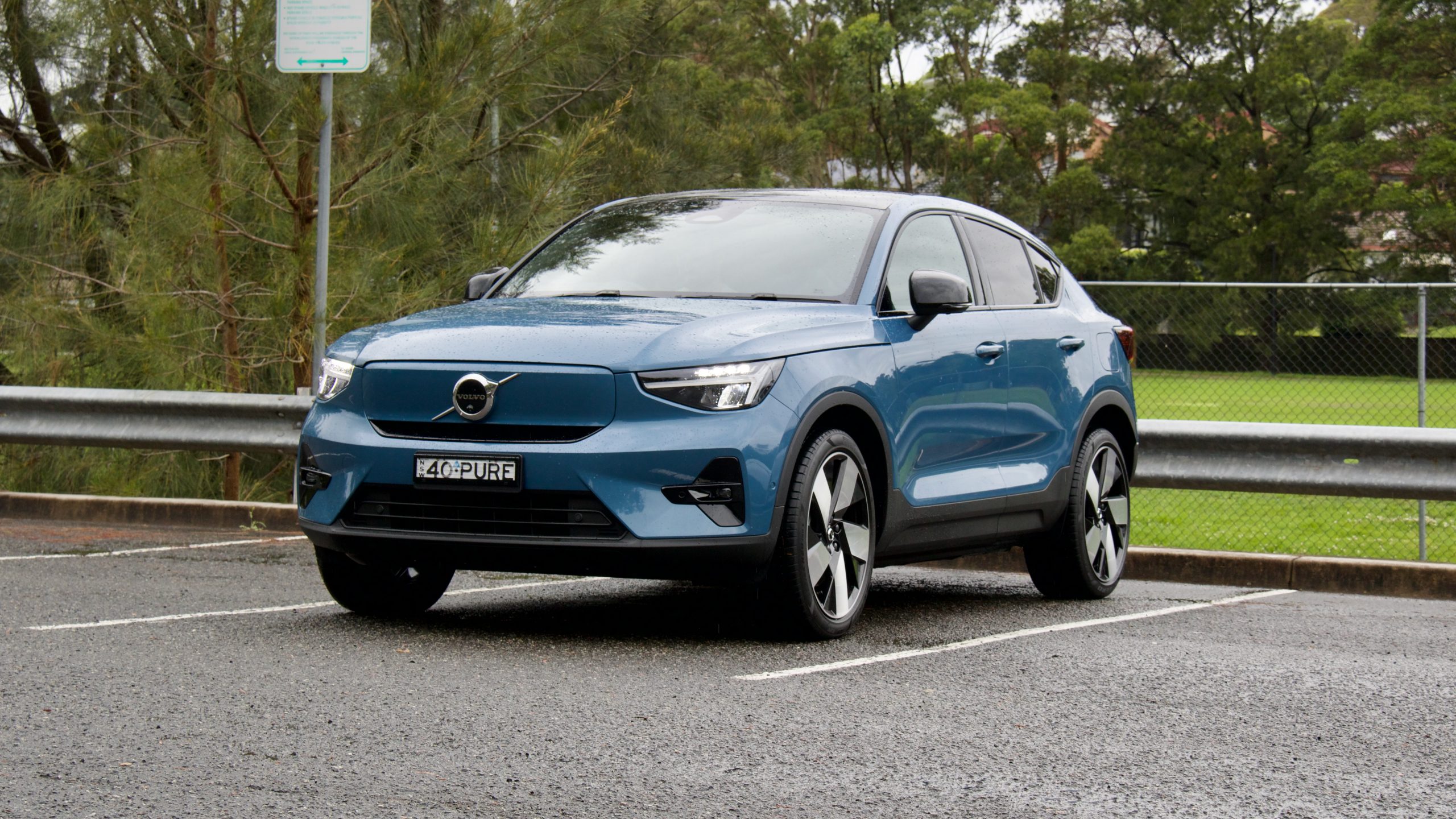
The C40 is the coupe variant of the excellent XC40 small SUV, but unlike the XC40, it’s only available in Recharge pure electric form. It’s only been on sale since late last year, but it’s already accounting for more than 10 per cent of the company’s local sales in 2023 so far (that’s 186 total sales of the C40 against the company’s 1,720 units sold to the end of February 2023).
Price & Equipment: 7/10
Volvo offers two C40 models in Australia: the entry-level Plus (from $75,990 plus on-road costs or around $83,500 drive away) and the upper-spec Ultimate that we tested here, which is priced from $83,490 +ORC or around $92,000 drive away.
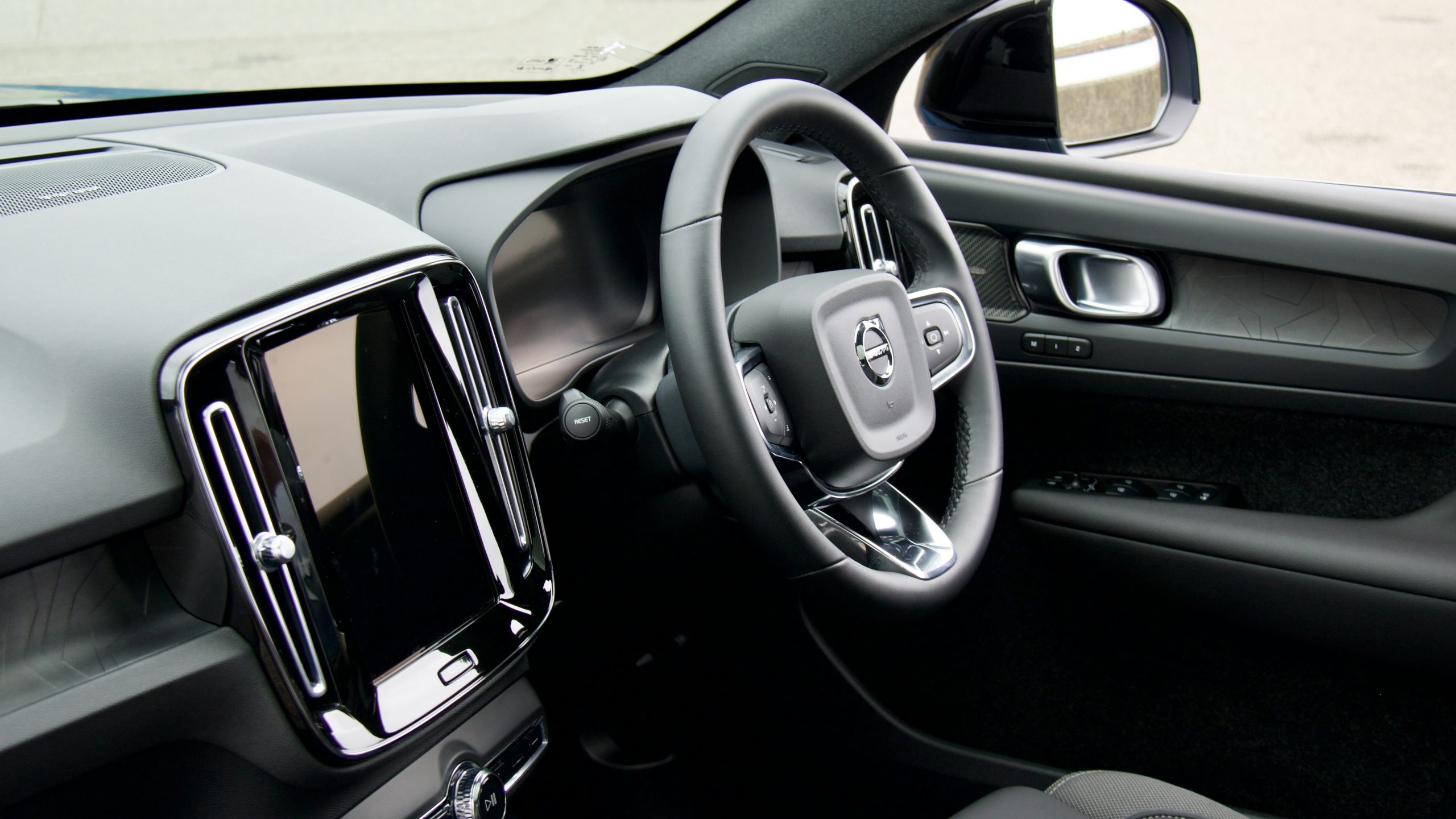
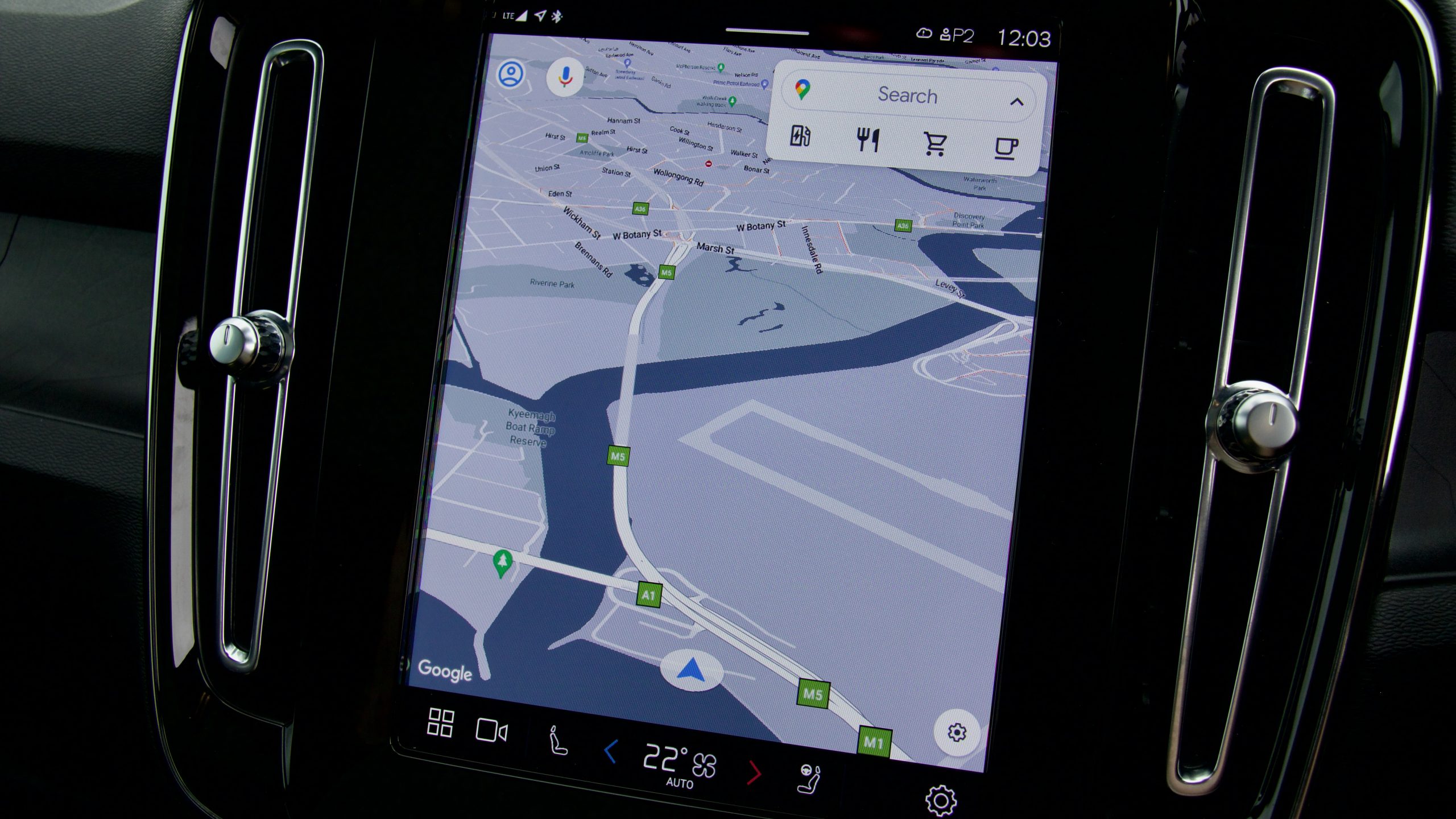
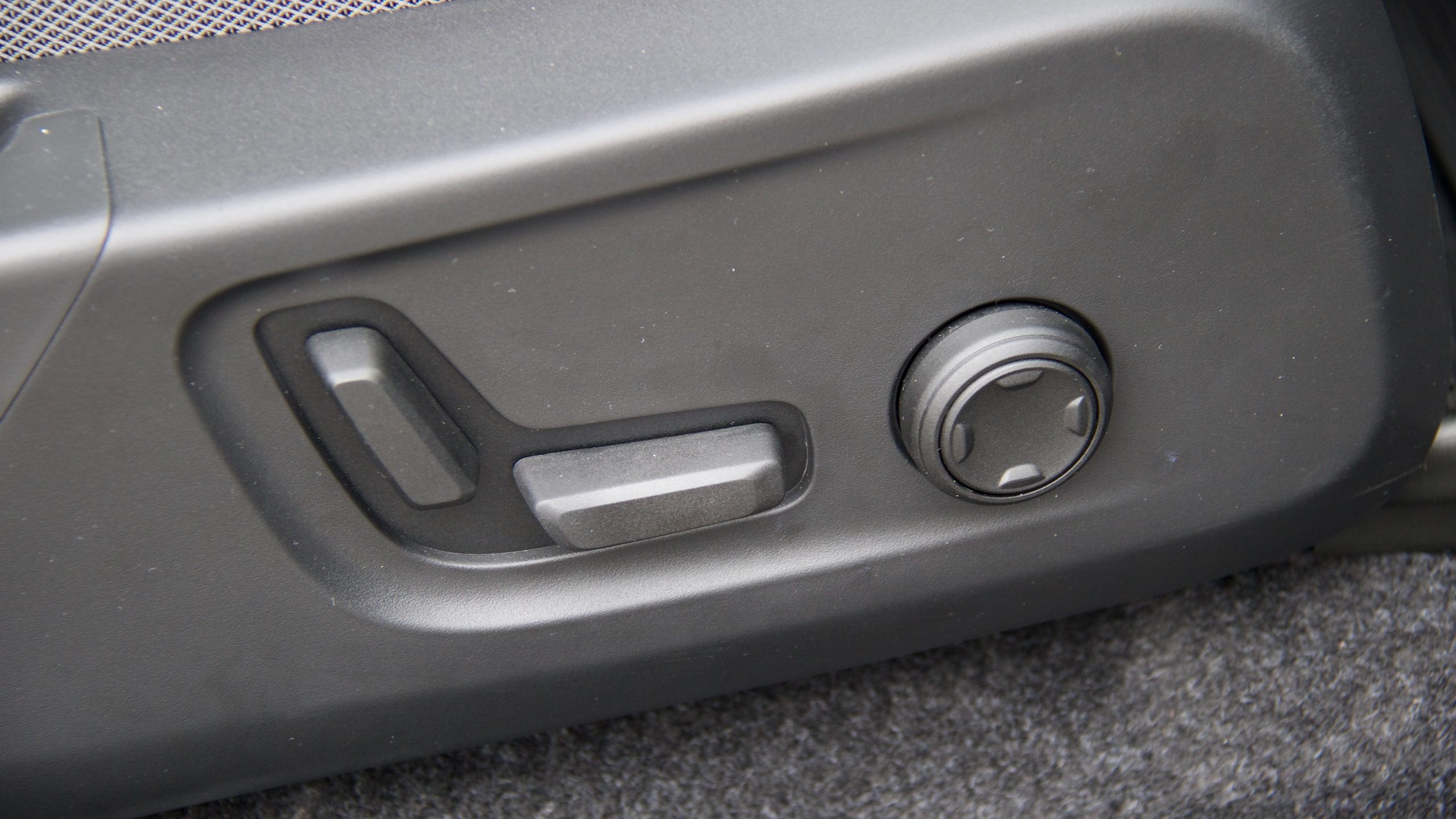
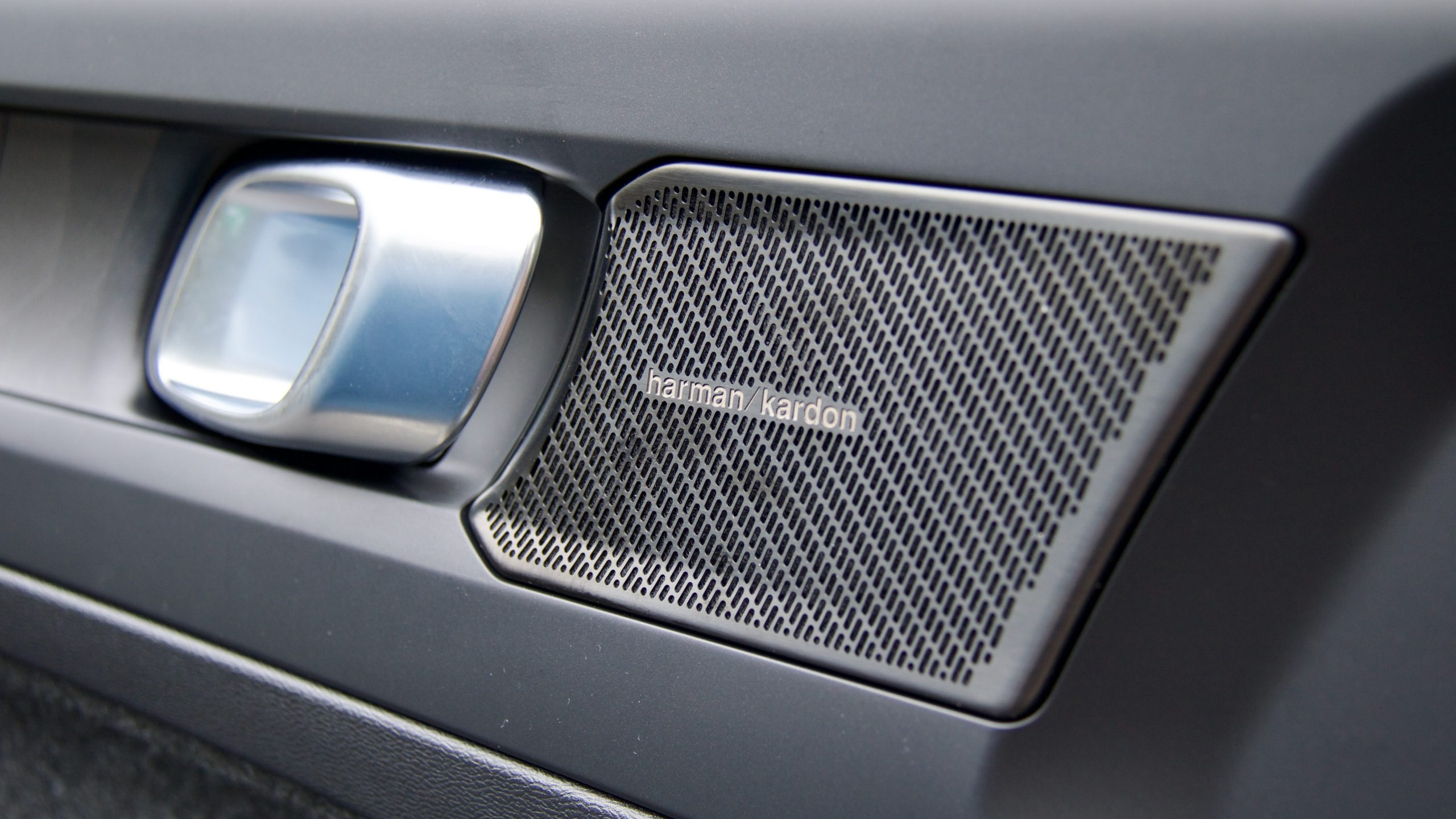
Standard kit on the Ultimate is lengthy with 20-inch alloy wheels, automatic all-LED lighting with front and rear daytime running lights, automatic wipers, keyless entry and start with a hands-free tailgate, ‘Microtech’ upholstery, 14-way electrically adjustable front seats with driver’s memory, heated front and outer rear front seats with a heated steering wheel, dual-zone climate control with a PM2.5 air filter and rear vents, power-folding rear headrests, a 9.0-inch portrait touchscreen with inbuilt Android Automotive software with live services and unlimited data for four years, Google Maps navigation, digital radio, wired Apple CarPlay, access to the Google Play store to download apps like Spotify, a 12.3-inch digital driver’s display, heated and auto-folding mirrors that dip in reverse, four USB-C ports, a wireless phone charger, a 600W 13-speaker Harman Kardon sound system and a panoramic glass roof.
Safety equipment includes seven airbags, auto emergency braking (AEB) with pedestrian, cyclist and large animal detection, adaptive cruise control with stop and go functionality and traffic jam assist, lane keeping assistance with lane trace assist, auto high beam, blind-spot monitoring with front and rear cross traffic alert, auto rear braking, driver attention monitoring, speed sign recognition, front and rear parking sensors, automatic parking functionality and a 360-degree camera.
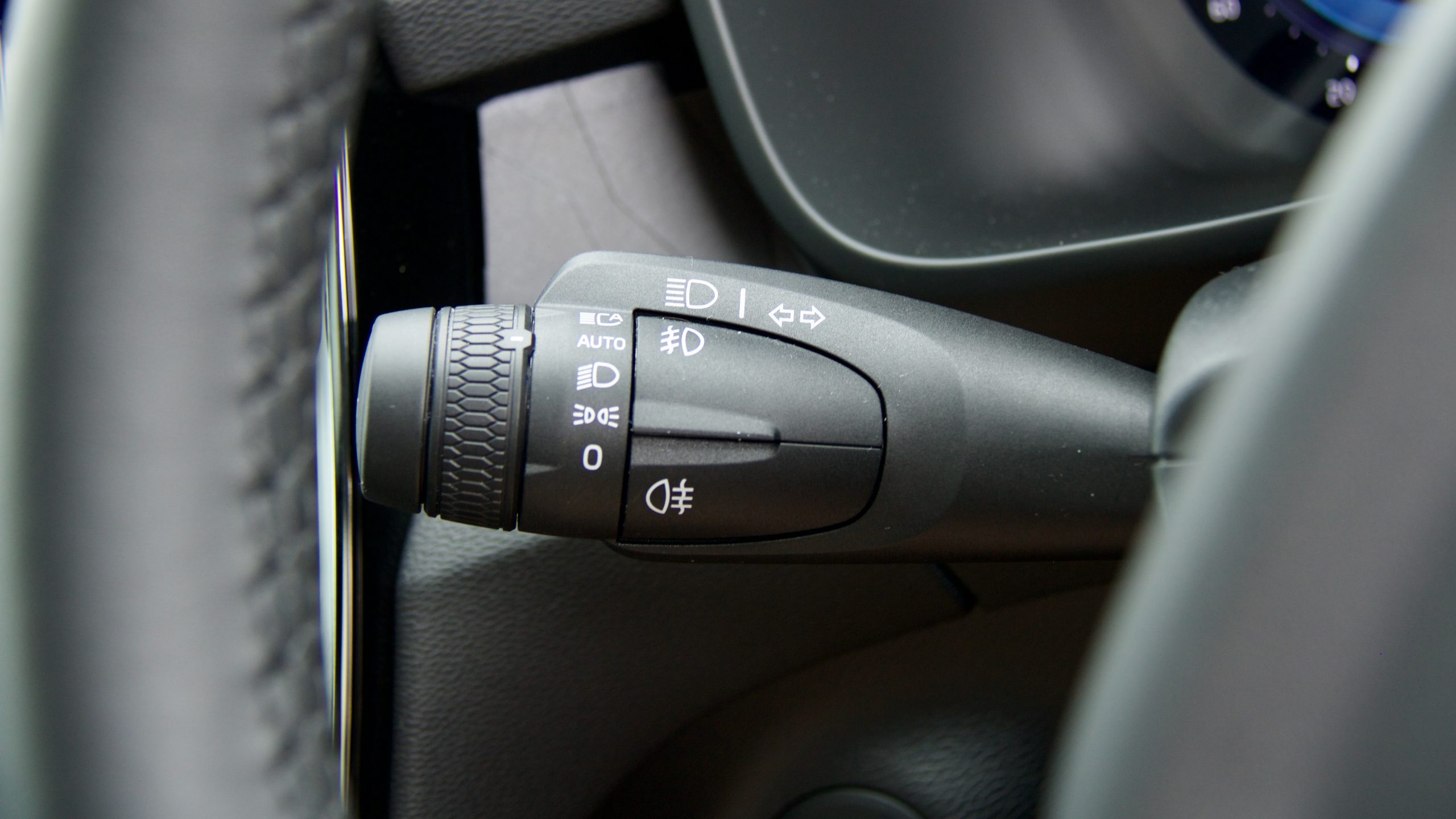
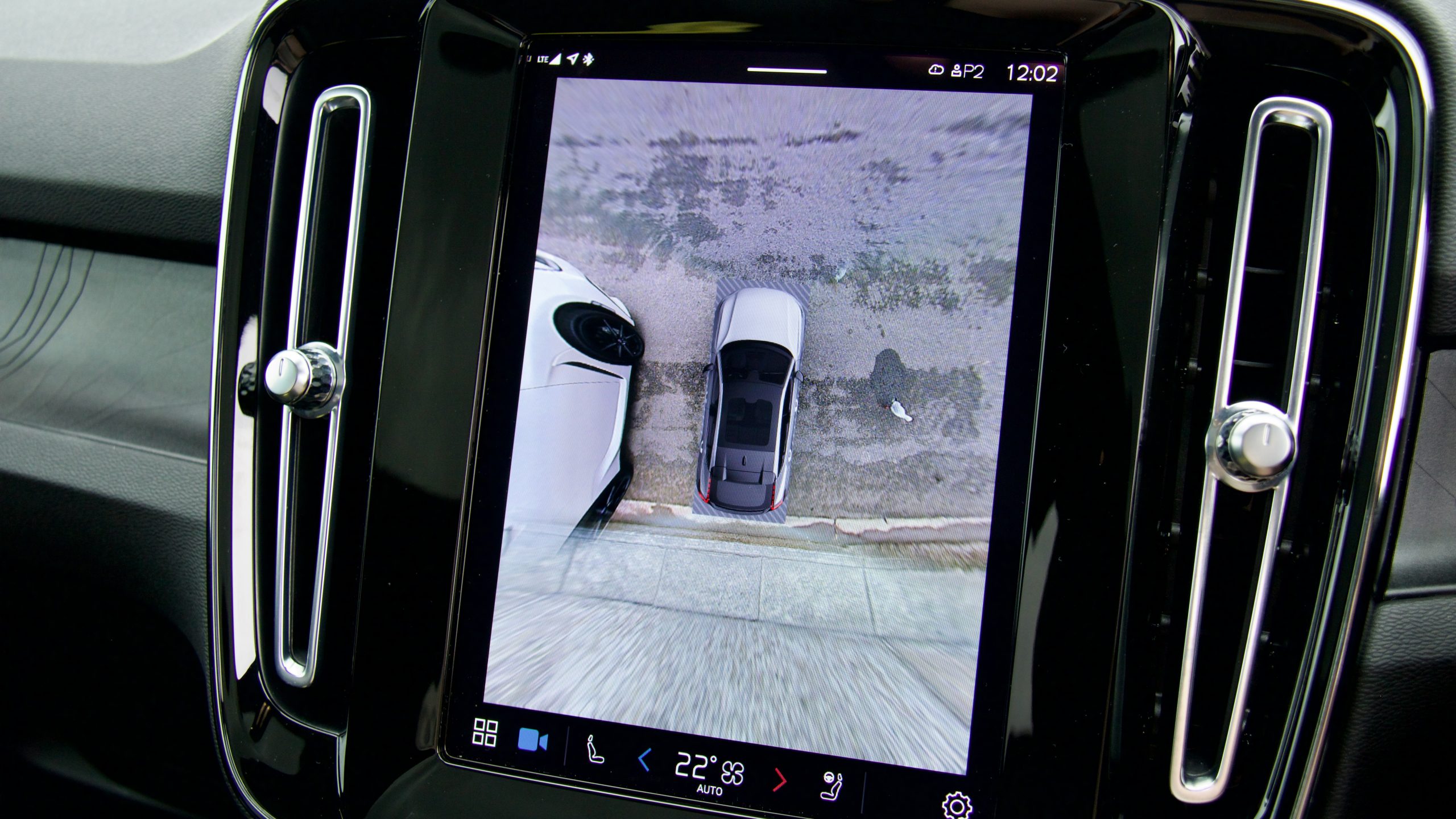
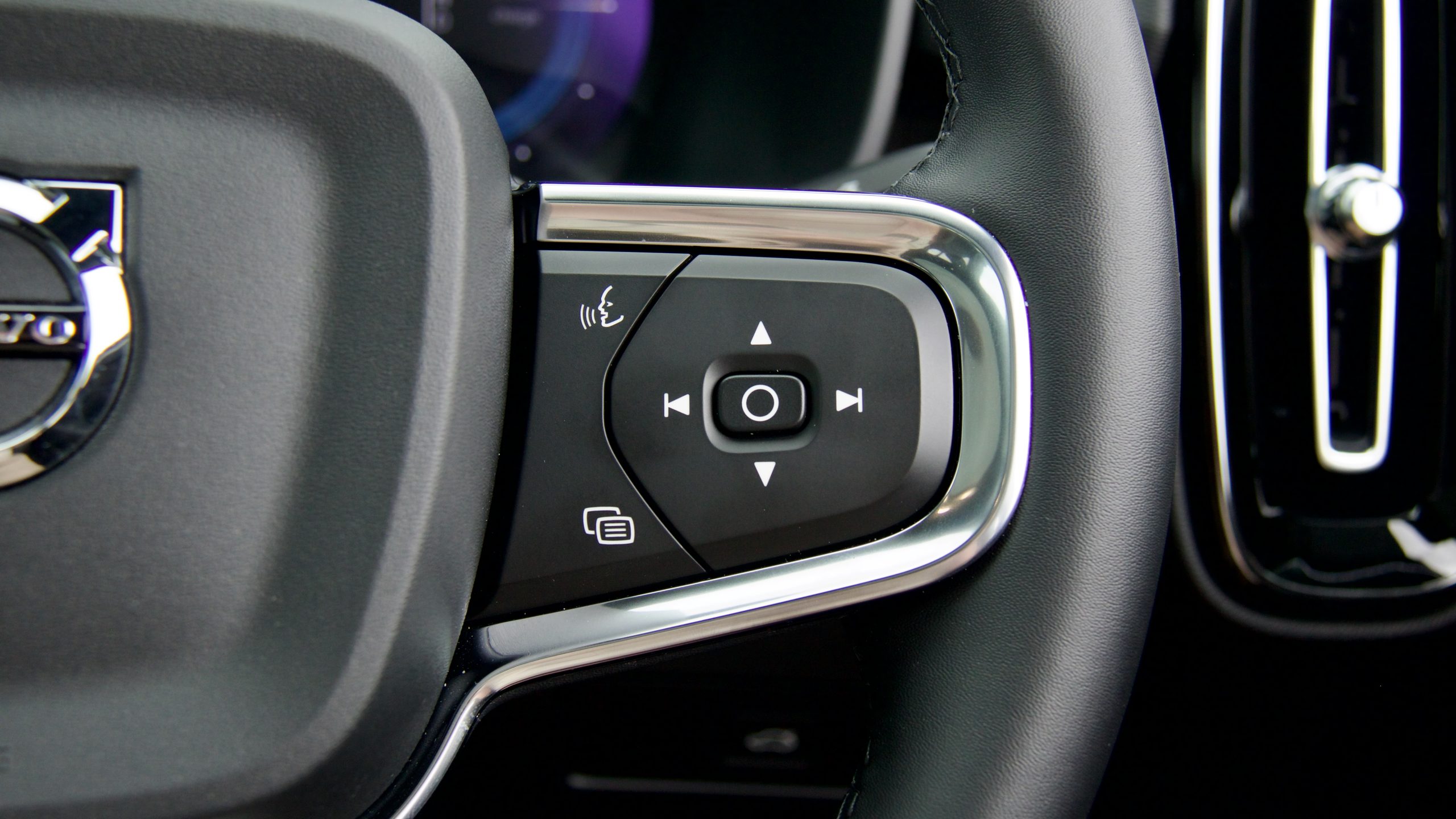
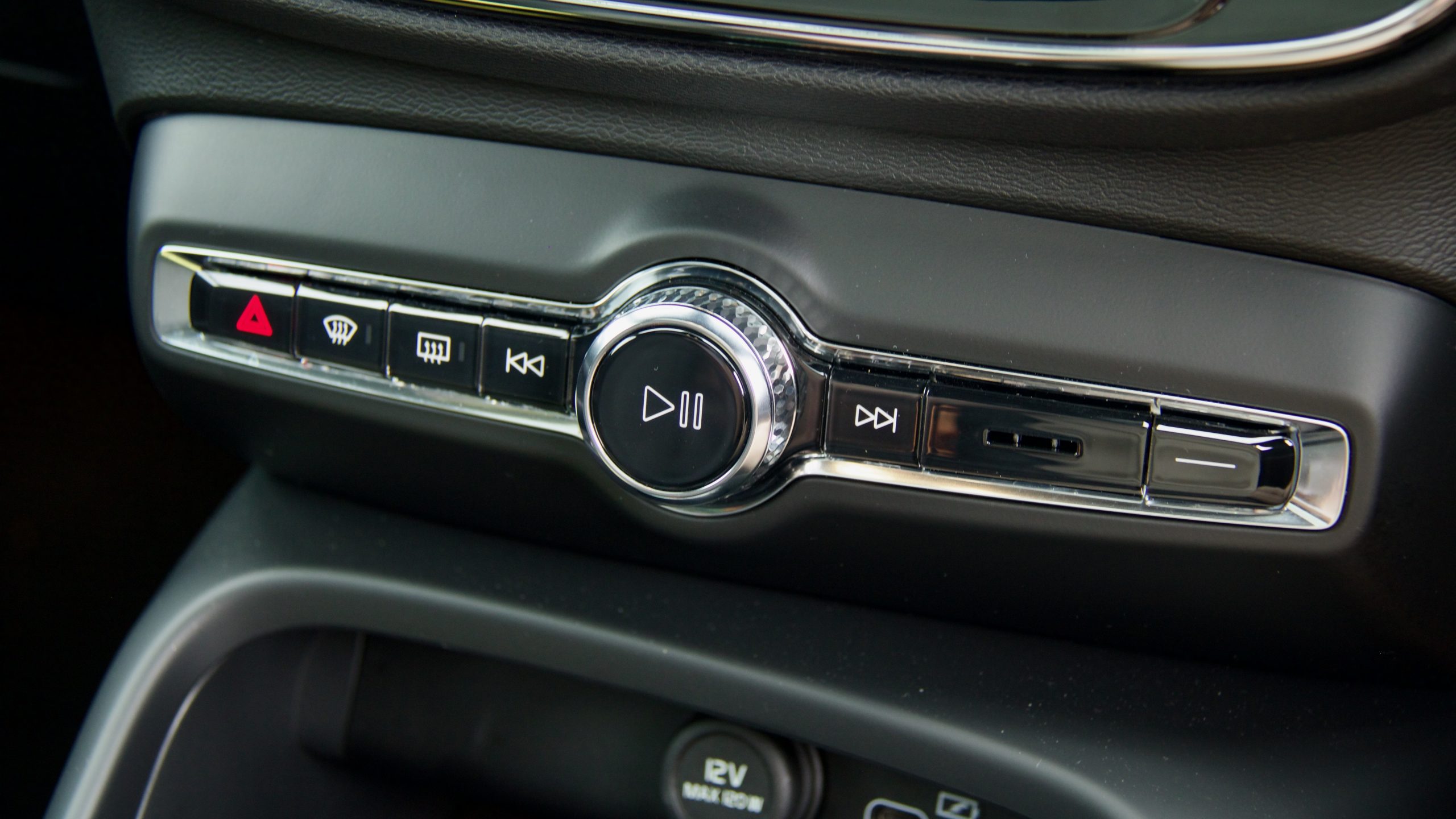
Refreshingly, there are no options for the C40 range, just a range of no-cost exterior colours: our test car’s ‘Fjord Blue’ is available alongside ‘Black Stone’, ‘Crystal White’, ‘Onyx Black’, ‘Fusion Red’, ‘Thunder Grey’, ‘Sage Green’ and ‘Silver Dawn’. Disappointingly, black is the only interior colour option.
Because there aren’t yet enough electric SUVs to consider different segments, there are both coupe and wagon electric SUVs to compete with the C40: the Tesla Model Y (from $69,300 plus on-road costs), Hyundai Ioniq 5 (from $74,000+ORC), Kia EV6 (from $72,590 +ORC), Mercedes-Benz EQA (from $81,700 +ORC) and BMW iX1 (from $82,900 +ORC) are the C40’s chief competition.
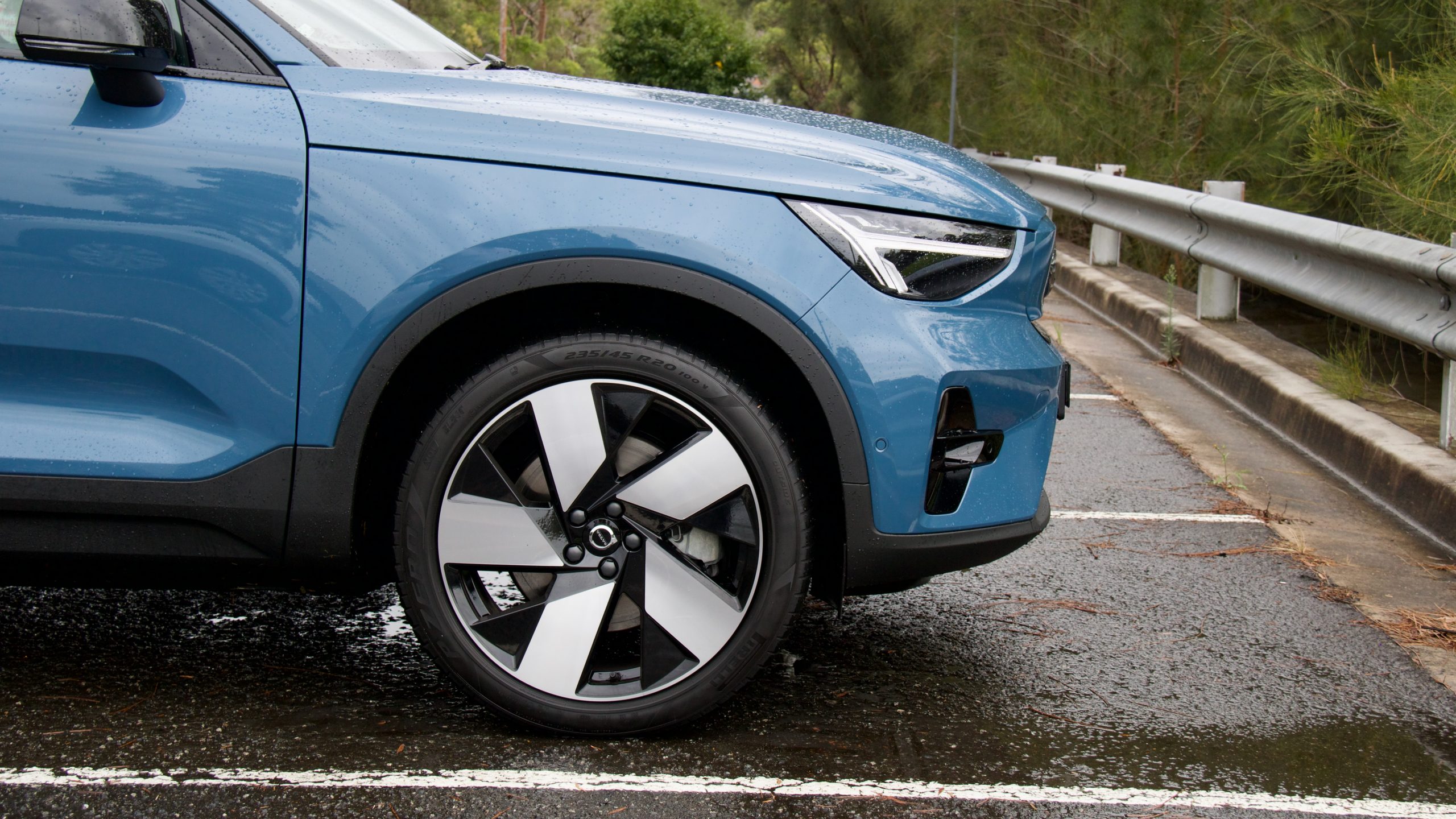
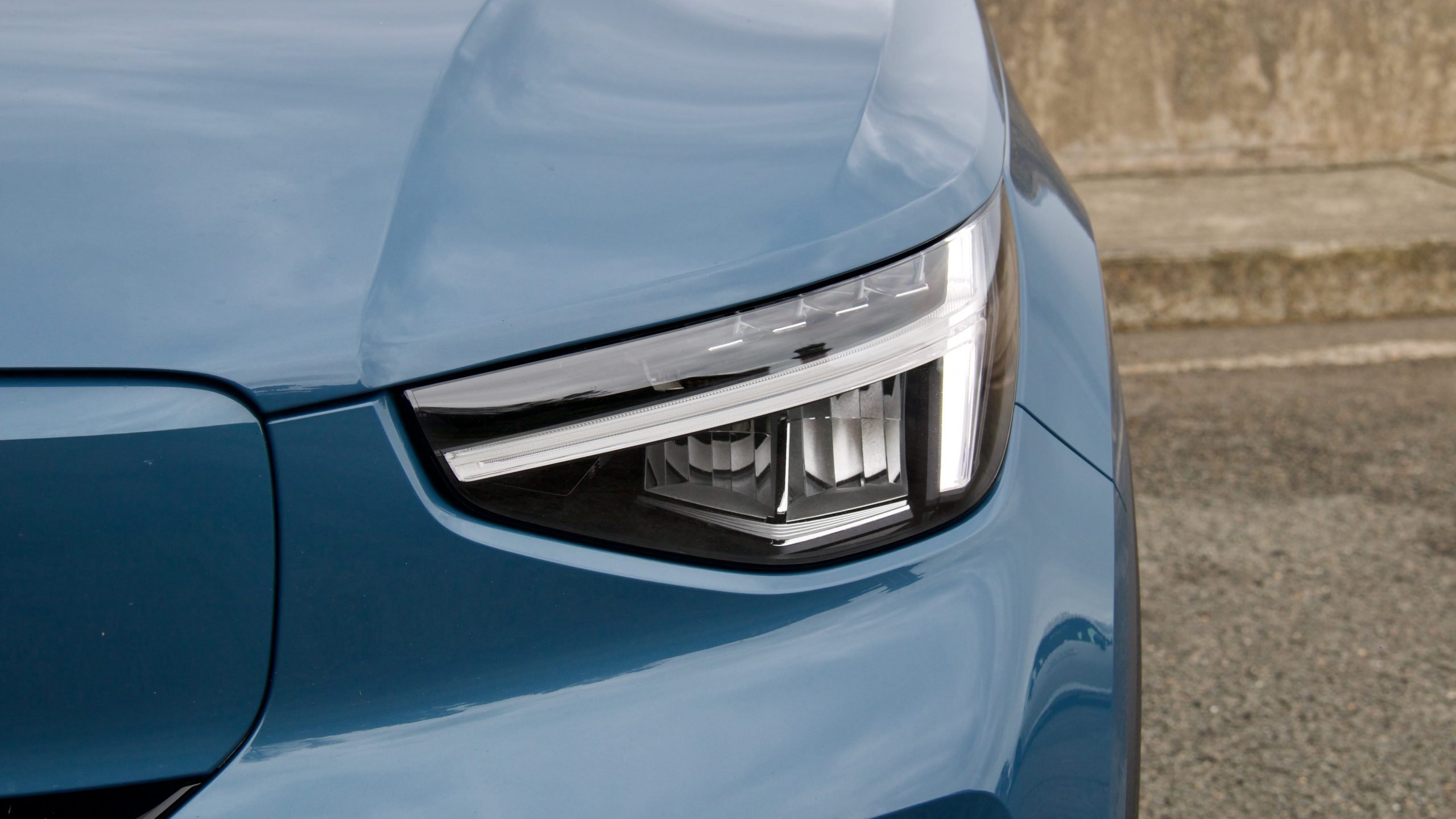
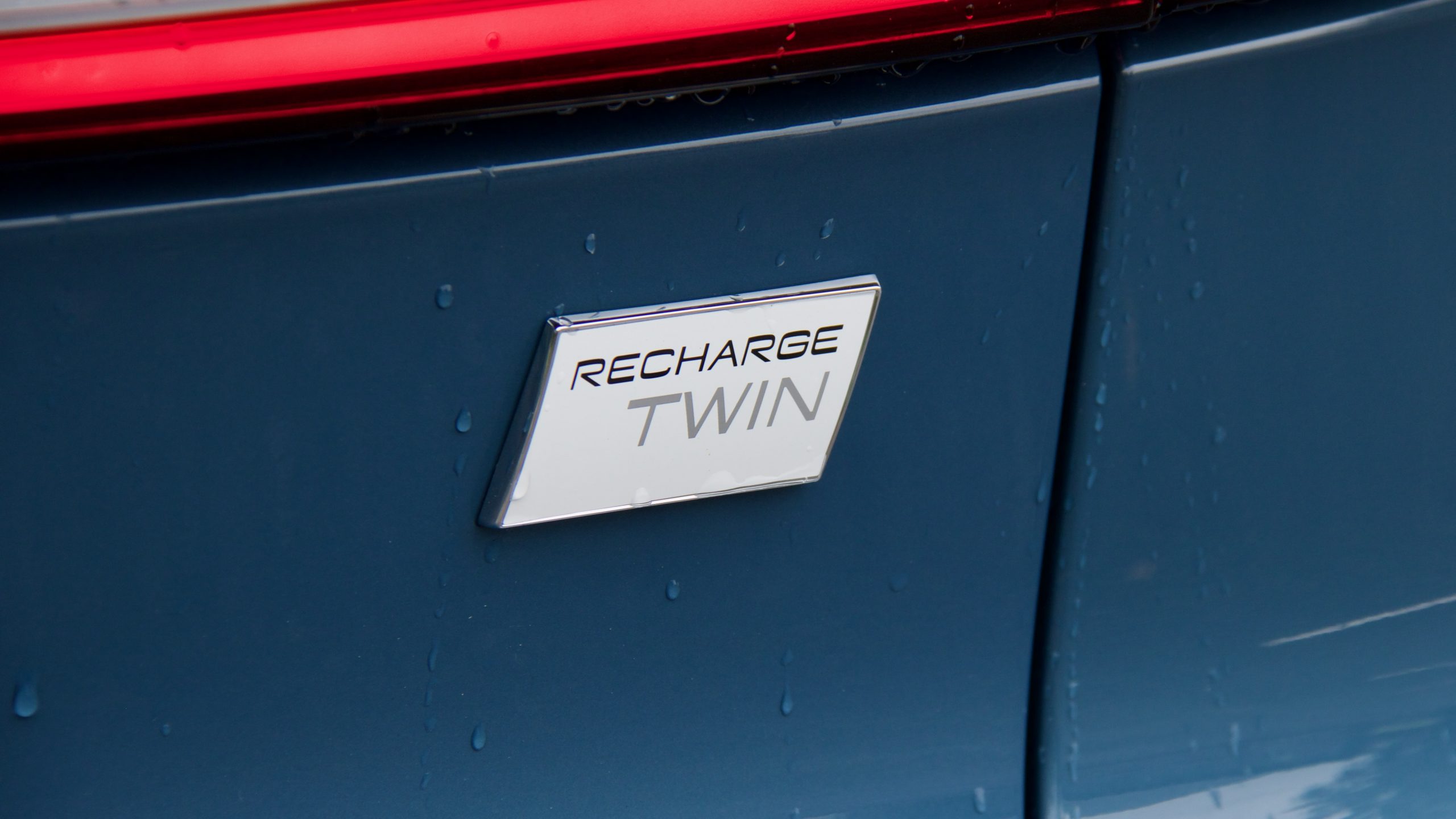
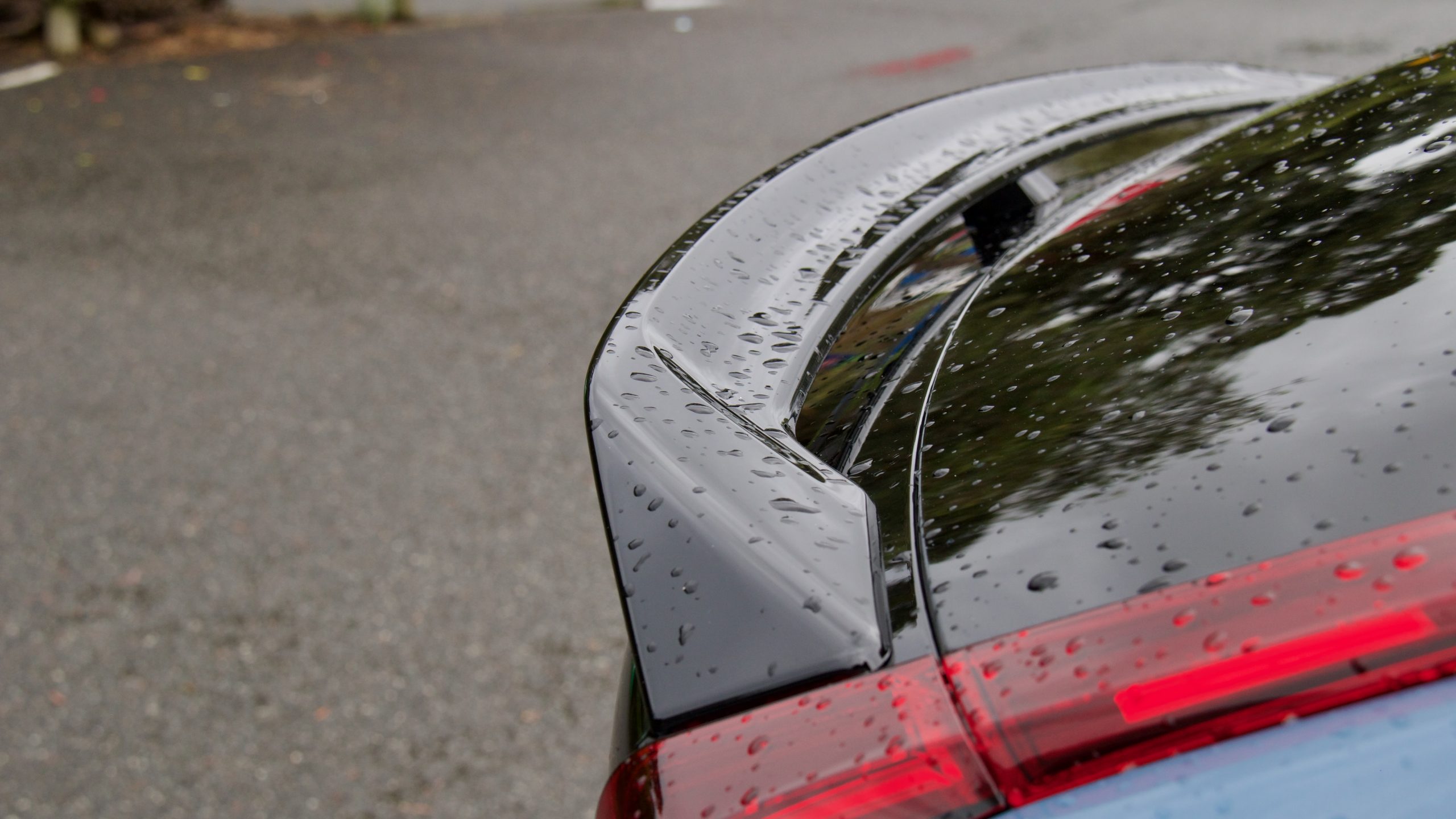
As you can tell, there’s a wide range of sizes and prices in that range but considering that you can get a better equipped and larger Model Y for almost $15,000 less, the C40’s value equation is not great. The XC40 Recharge is also around $3,000 less drive away than the C40, but is more practical.
Performance & Range: 8/10
Under the bonnet of the 2023 Volvo C40 Recharge is, well, a second boot. But beneath that are two electric motors – one on each axle for all-wheel drive – for a combined output of 300kW/660Nm. The motors are fed by a 78kWh lithium ion battery that’s mounted underneath the floor.
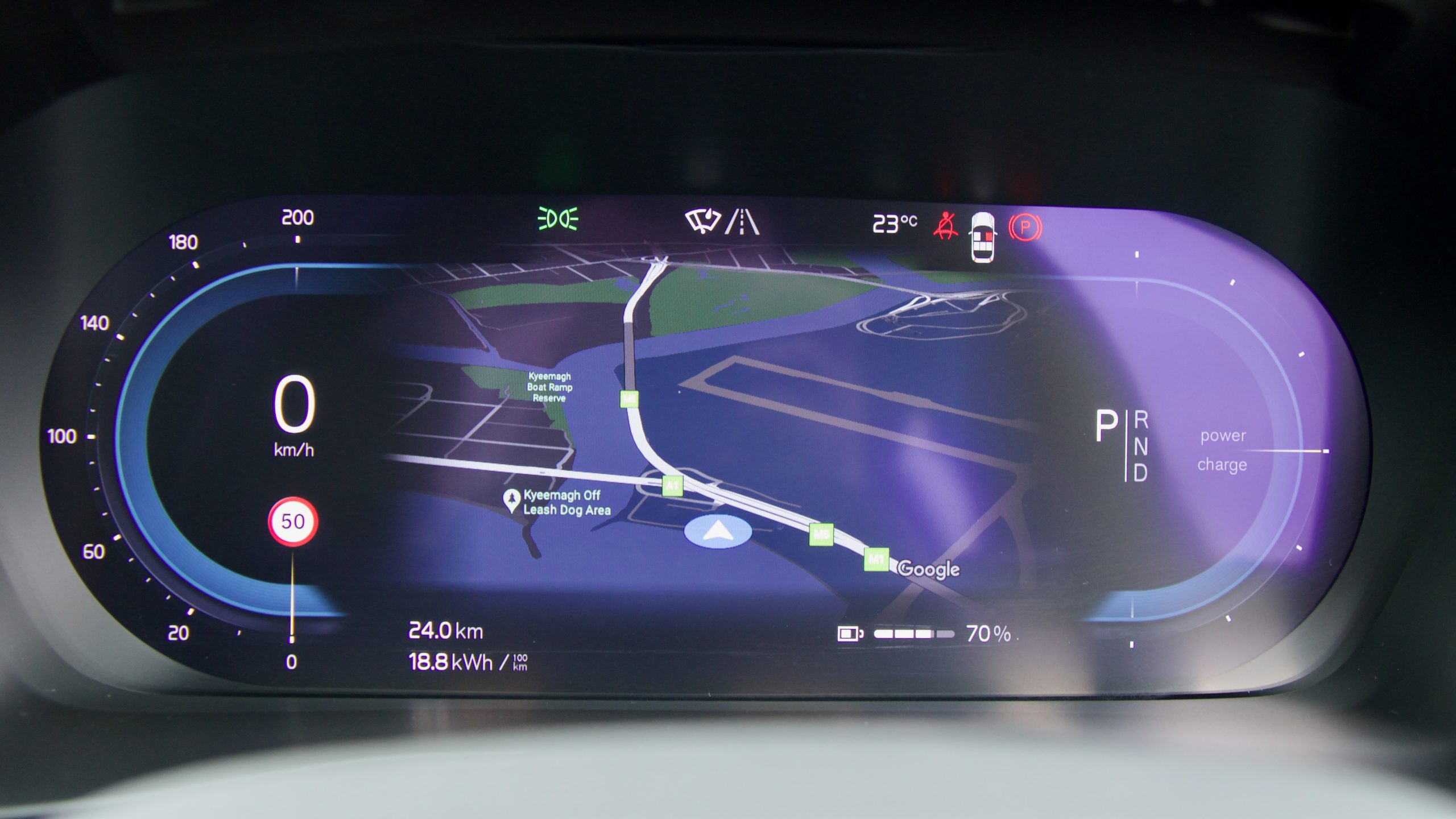
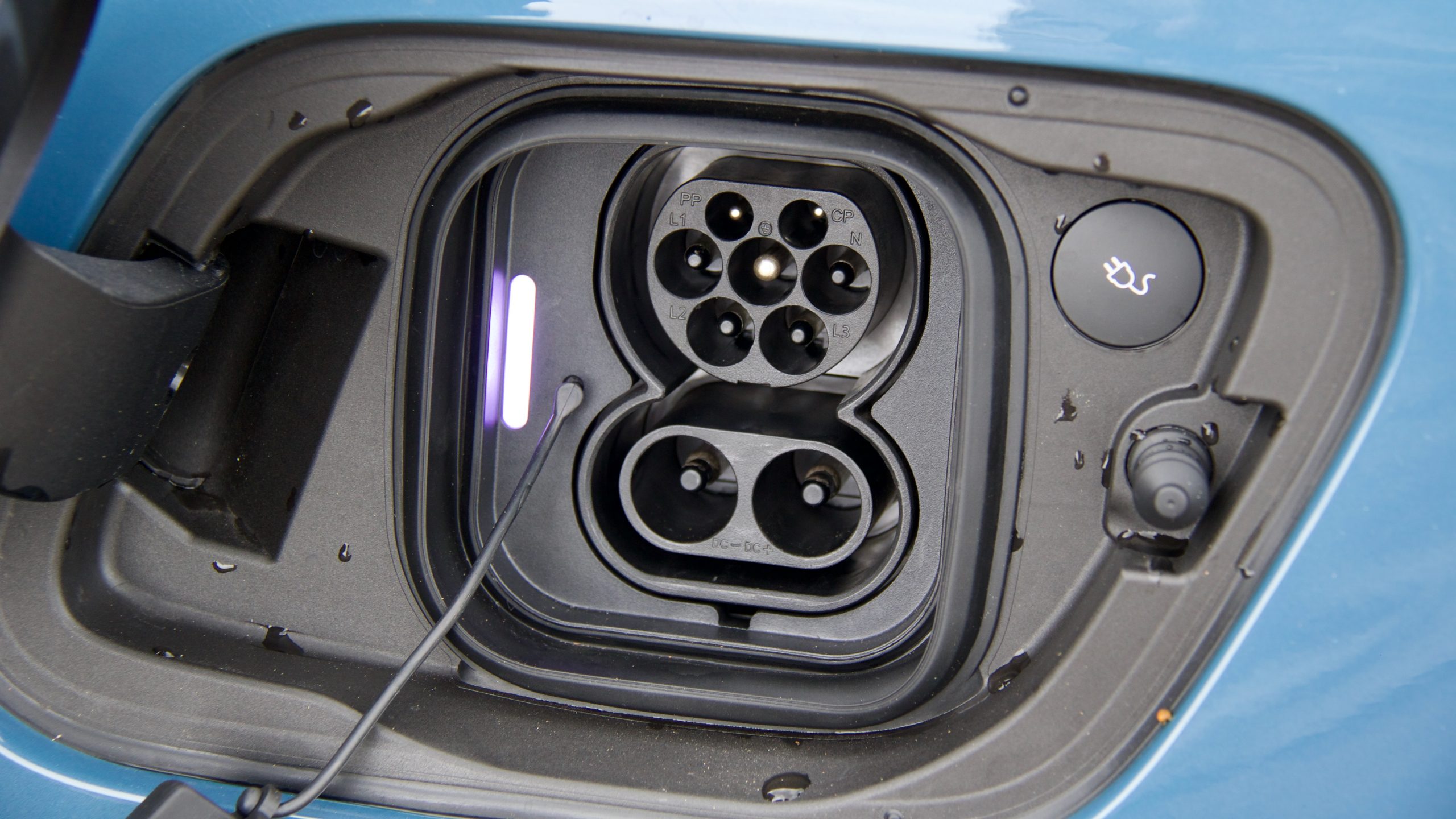
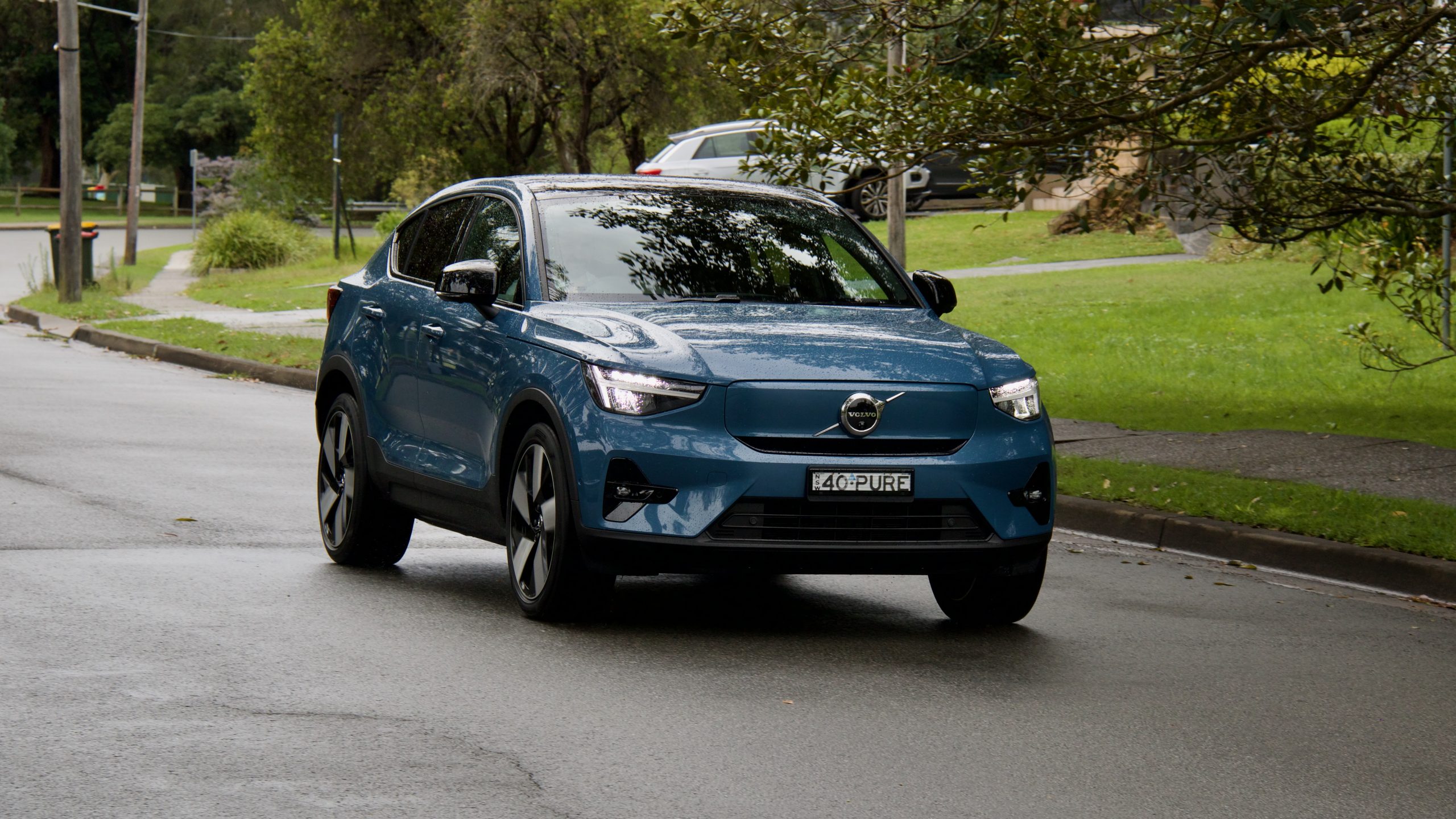
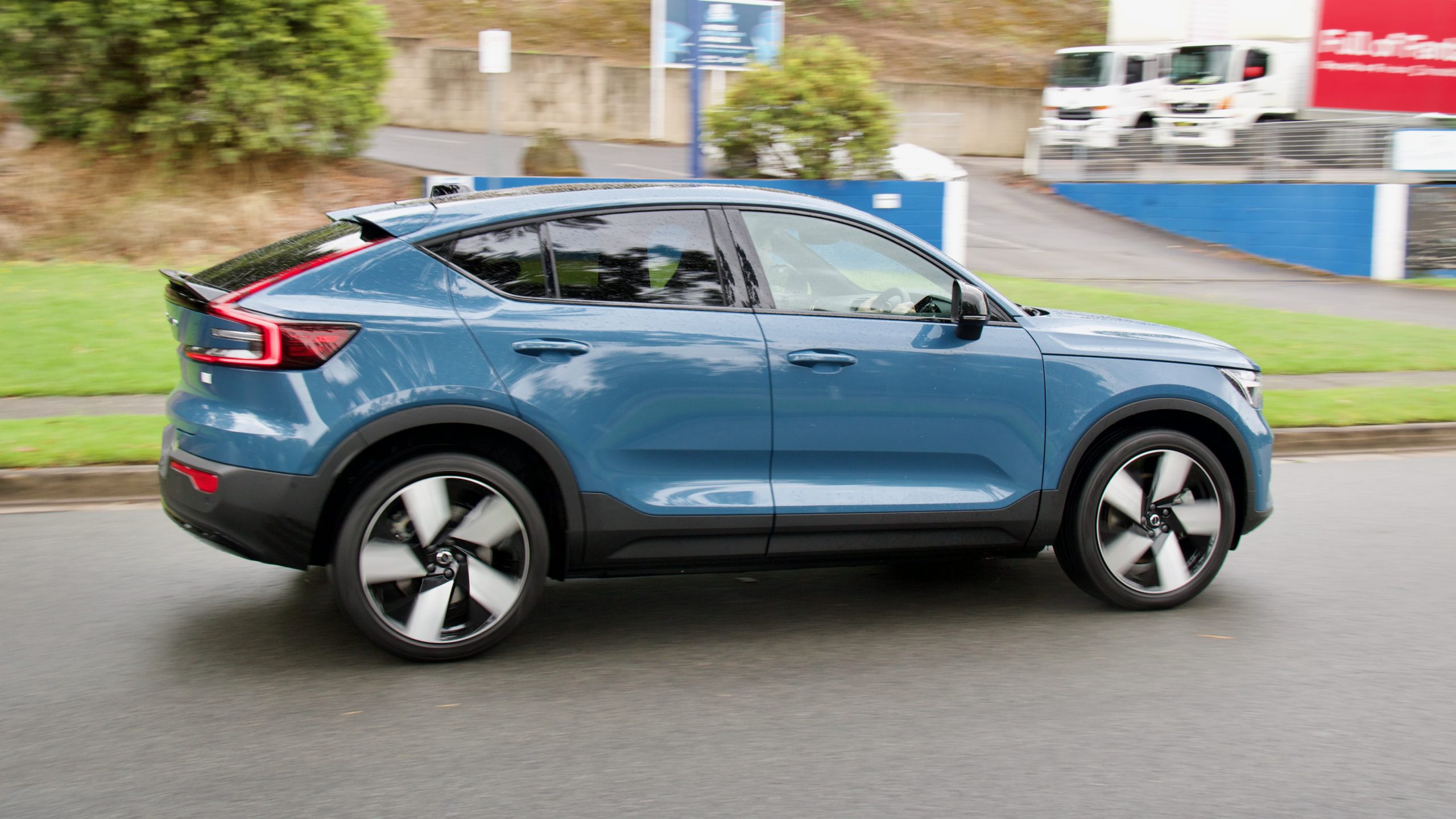
As its outputs suggest, the C40 Recharge Twin is quite quick. Its claimed 4.7 second 0-100km/h sprint time actually feels a touch conservative as while power is limited from a standstill to help save tyres, a prod of the throttle at higher speed quickly pushes you into the seat. We also like how simple Volvo’s regenerative braking is – it’s either off or maximum on – but we’d love to see a half way point added because without it turned on, energy consumption climbs but with it turned on, because it’s largely a one-pedal set up, you can feel a bit car sick.
The claimed WLTP range for the twin-motor C40 Ultimate is 420km, which is 14km less than the single-motor Plus thanks to the added weight of the second electric motor that’s located on the rear axle. The C40 can be charged at up to 150kW using a DC fast charger, with a 0 to 80 per cent charge possible in around 40 minutes. Using a slower AC charger (up to 11kW) allows for a full charge in around eight hours.
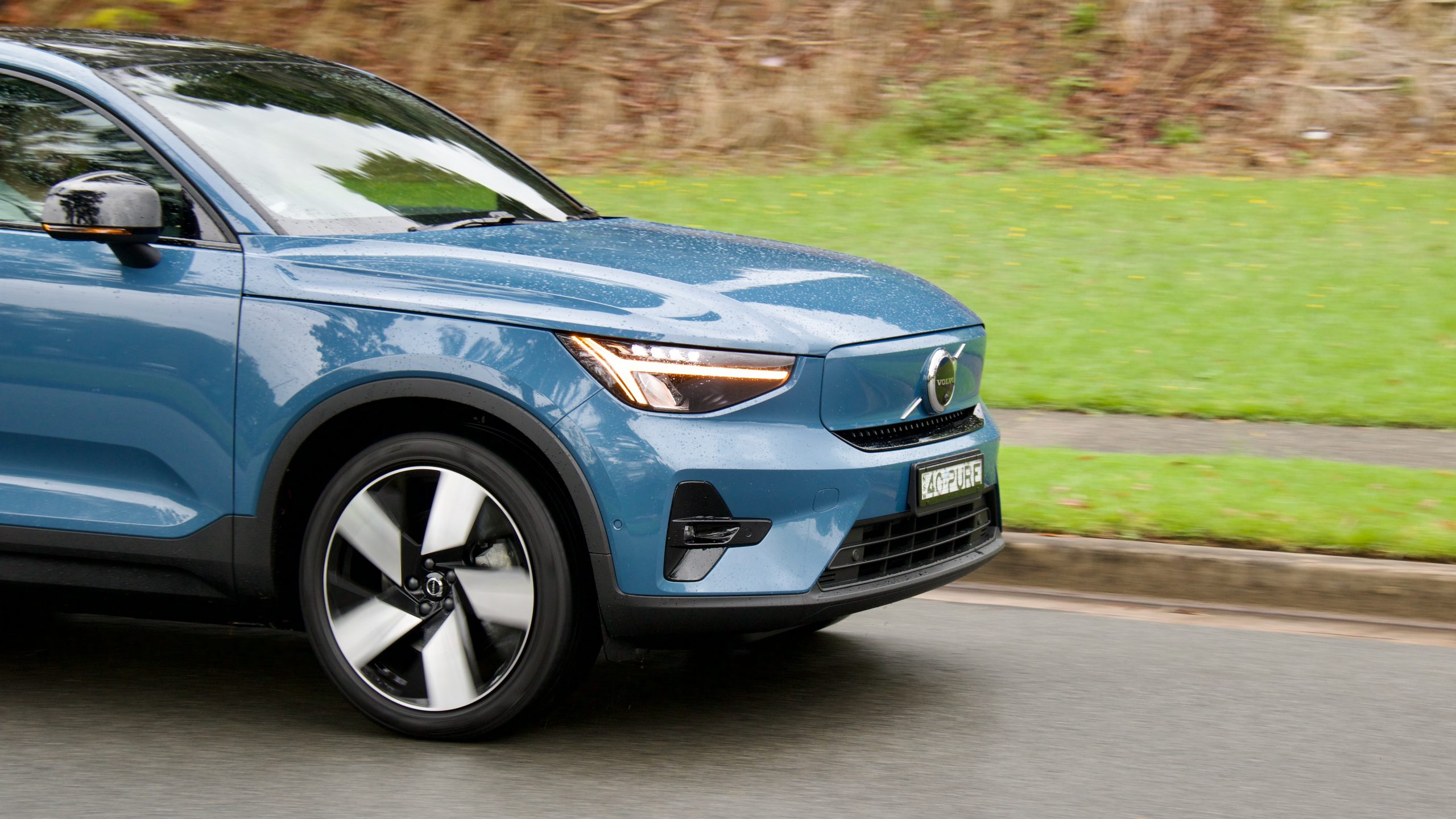
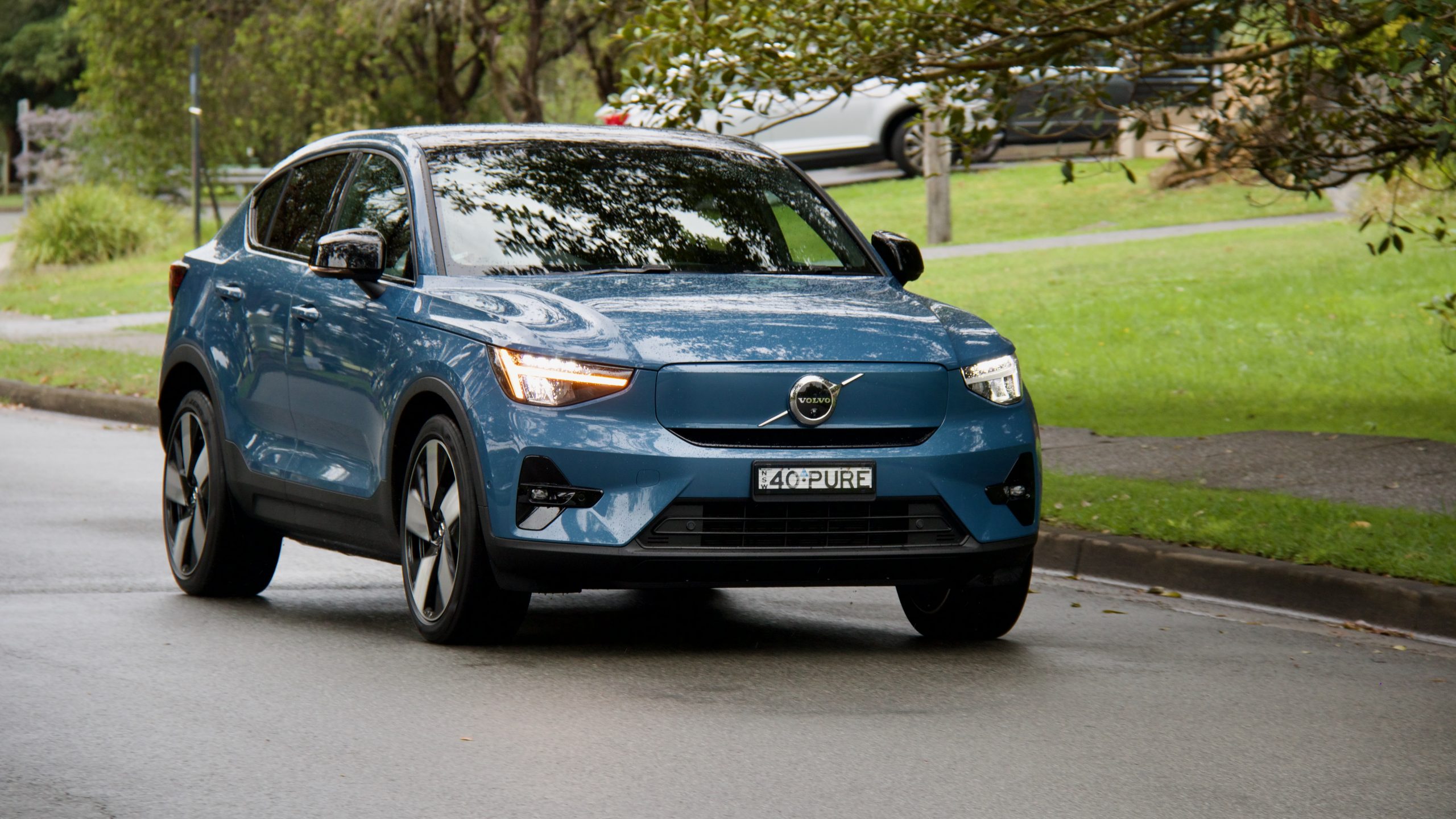
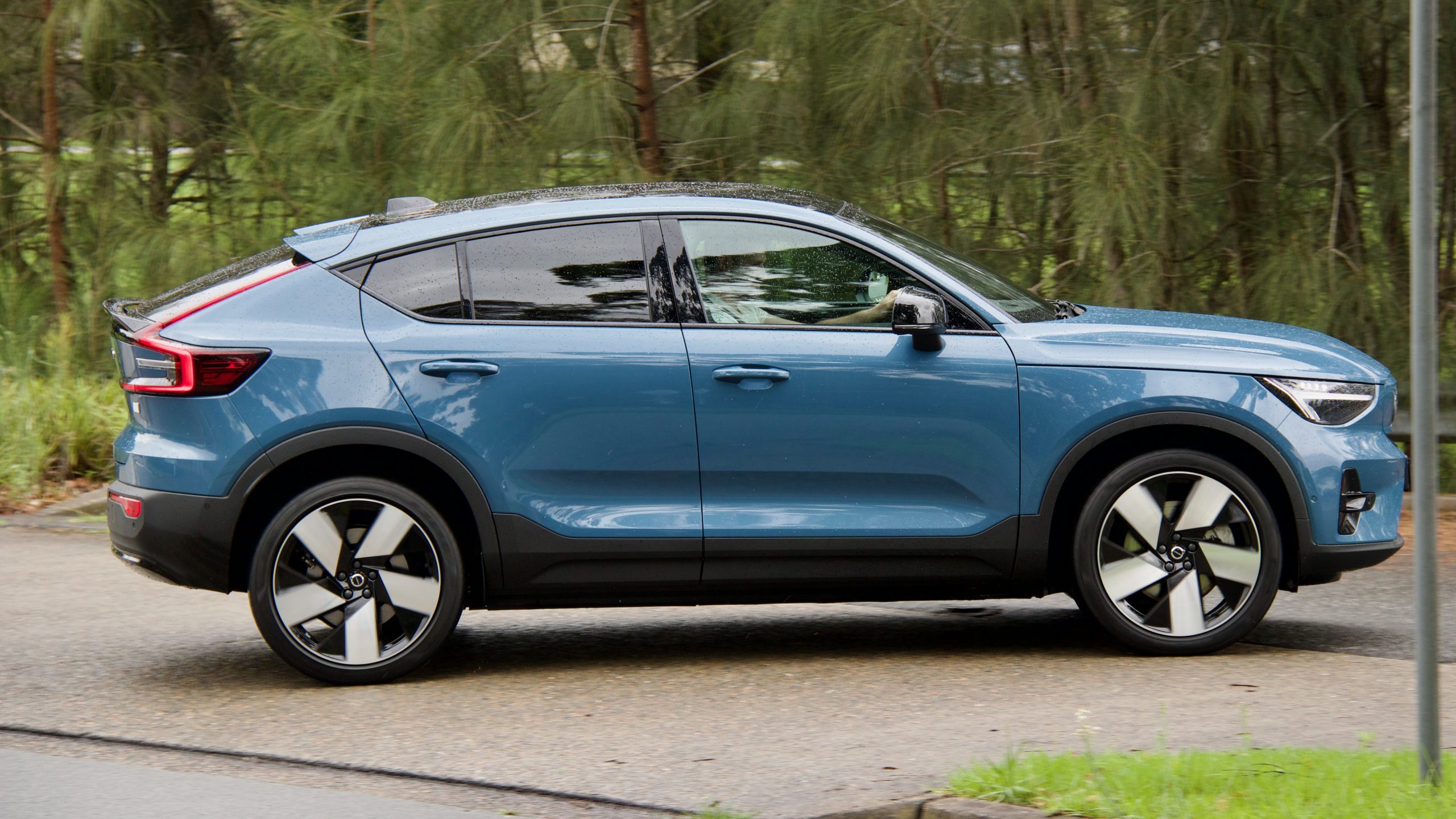
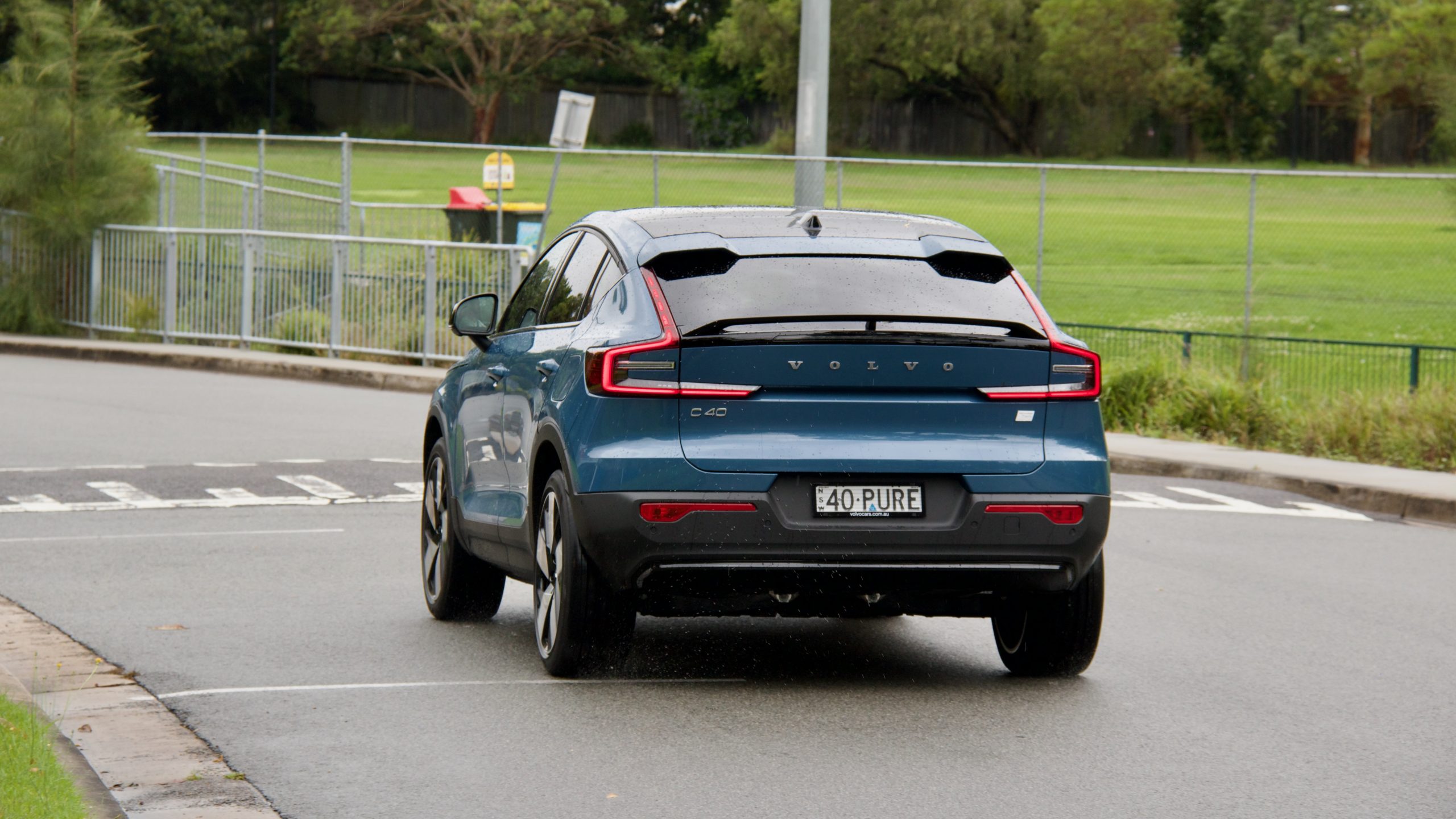
We were lucky to test the C40 for two weeks this time around and were able to get more real world realistic consumption figures as a result. We averaged around 350km from each charge in a mix of driving, which gives consumption of around 22kWh/100km, which isn’t great. Thankfully, the MY24 C40 and XC40 (and their platform-sharing Polestar 2 sibling) range will include a range of improvements to aid efficiency, and we’re very keen to test them later in 2023. Highlights include switching to a more efficient rear-wheel drive layout for the entry-level Pure, according to Volvo.
Ride & Handling: 9/10
Based on the same ‘CLA’ platform as the XC40 and the Polestar 2, the 2023 Volvo C40 has accomplished platform siblings that should see it drive quite well. Thankfully, it does. Its ride quality is somewhat firm – likely due to its 2,154kg tare mass – but it’s well tuned and quite comfortable. The steering – like the XC40 – is not the last word in feel, but it’s well weighted. In addition to its rapid speed, the C40 can be quite fun thanks to good balance and great chassis grip – though it does always feel heavy. If you want to tow with it, it can tow a braked 1,800kg trailer.
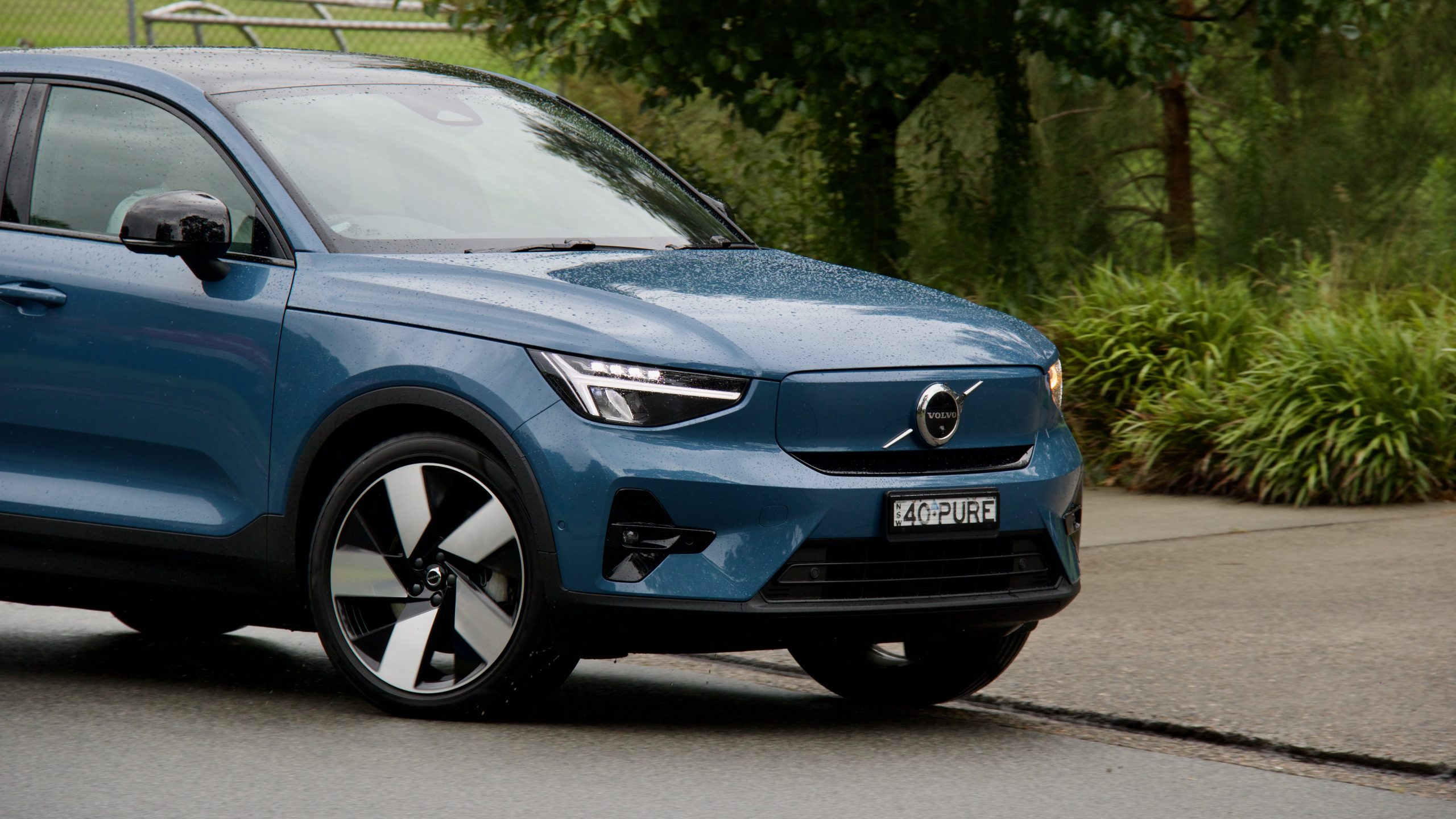
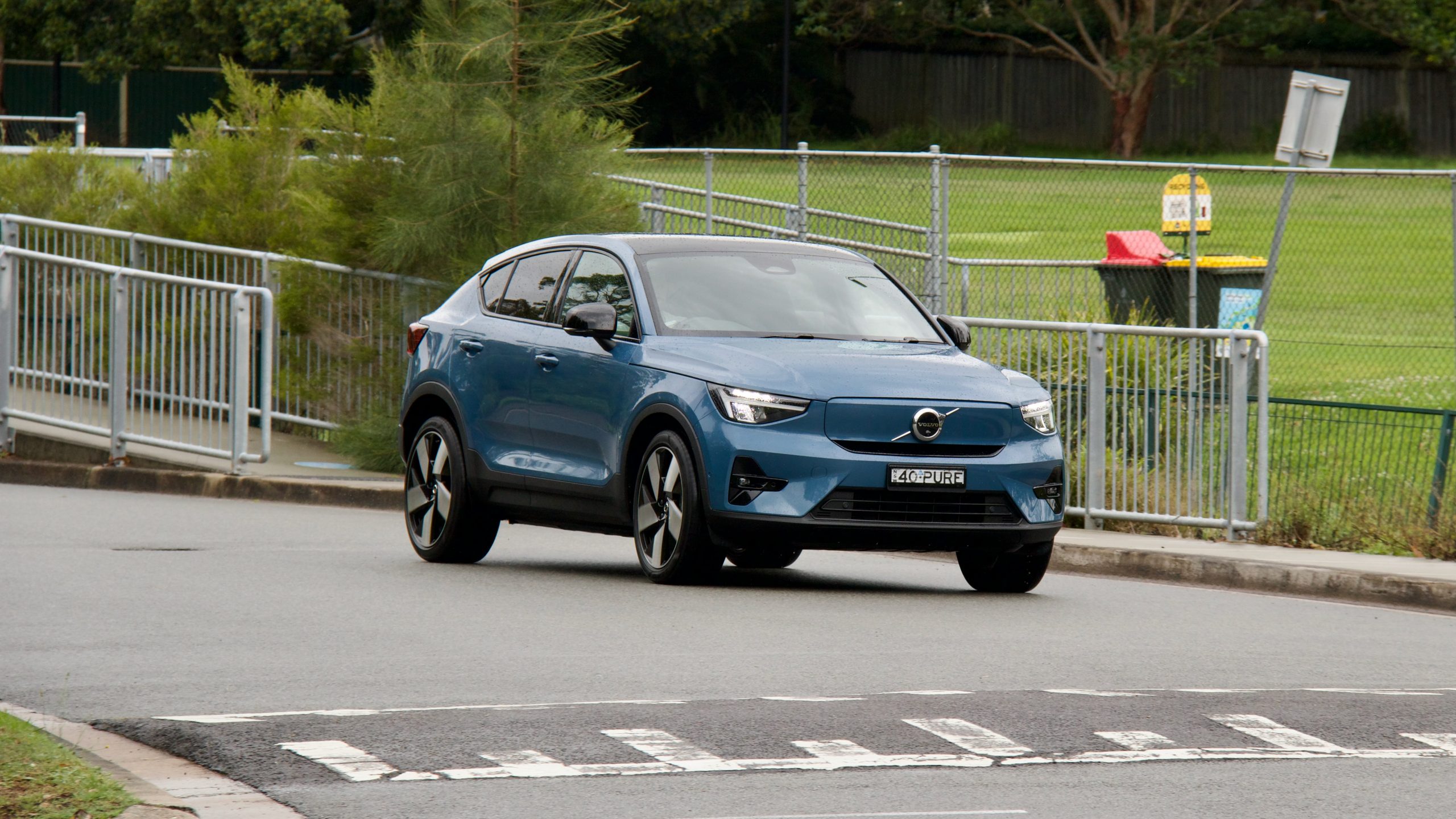
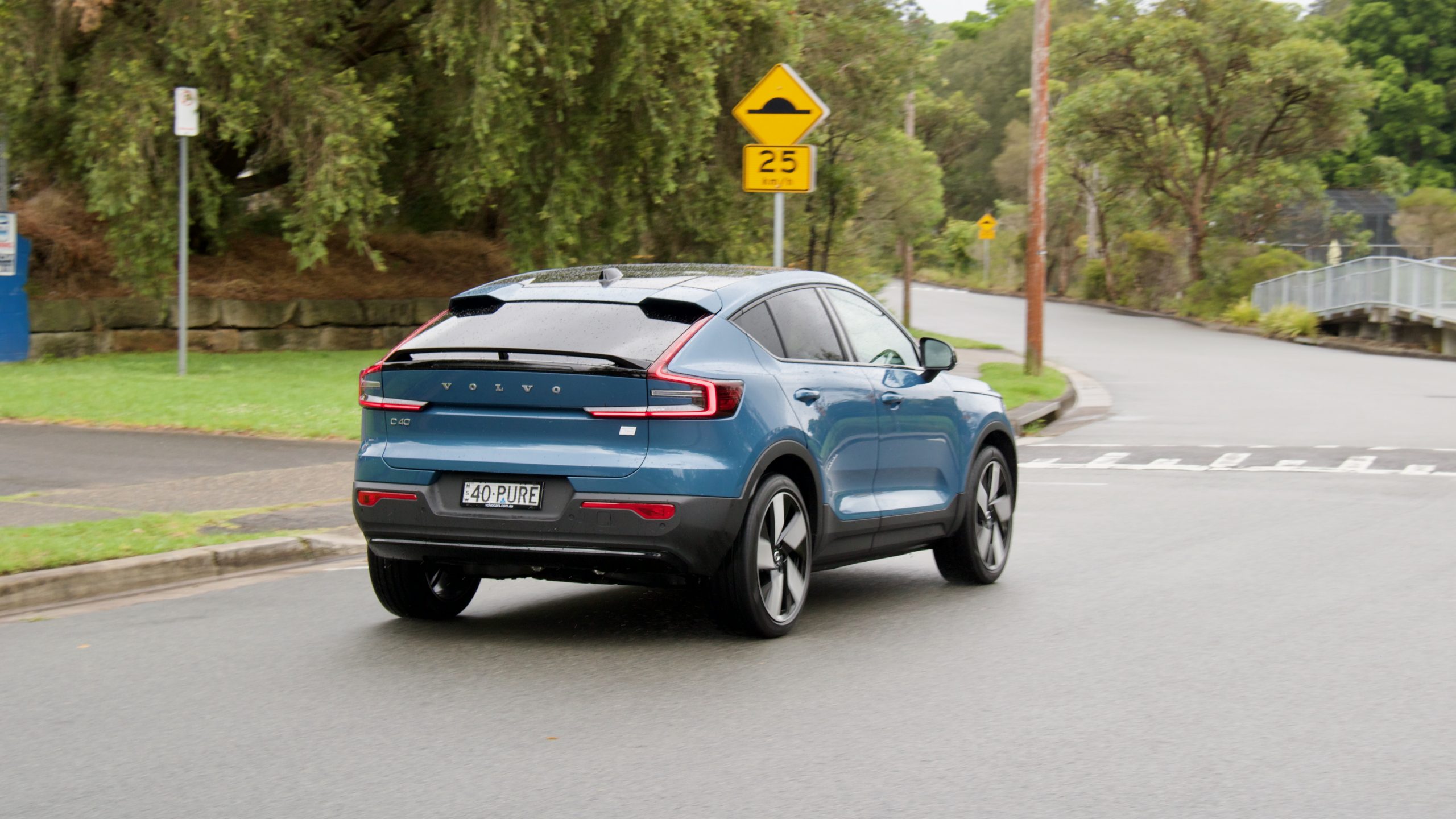
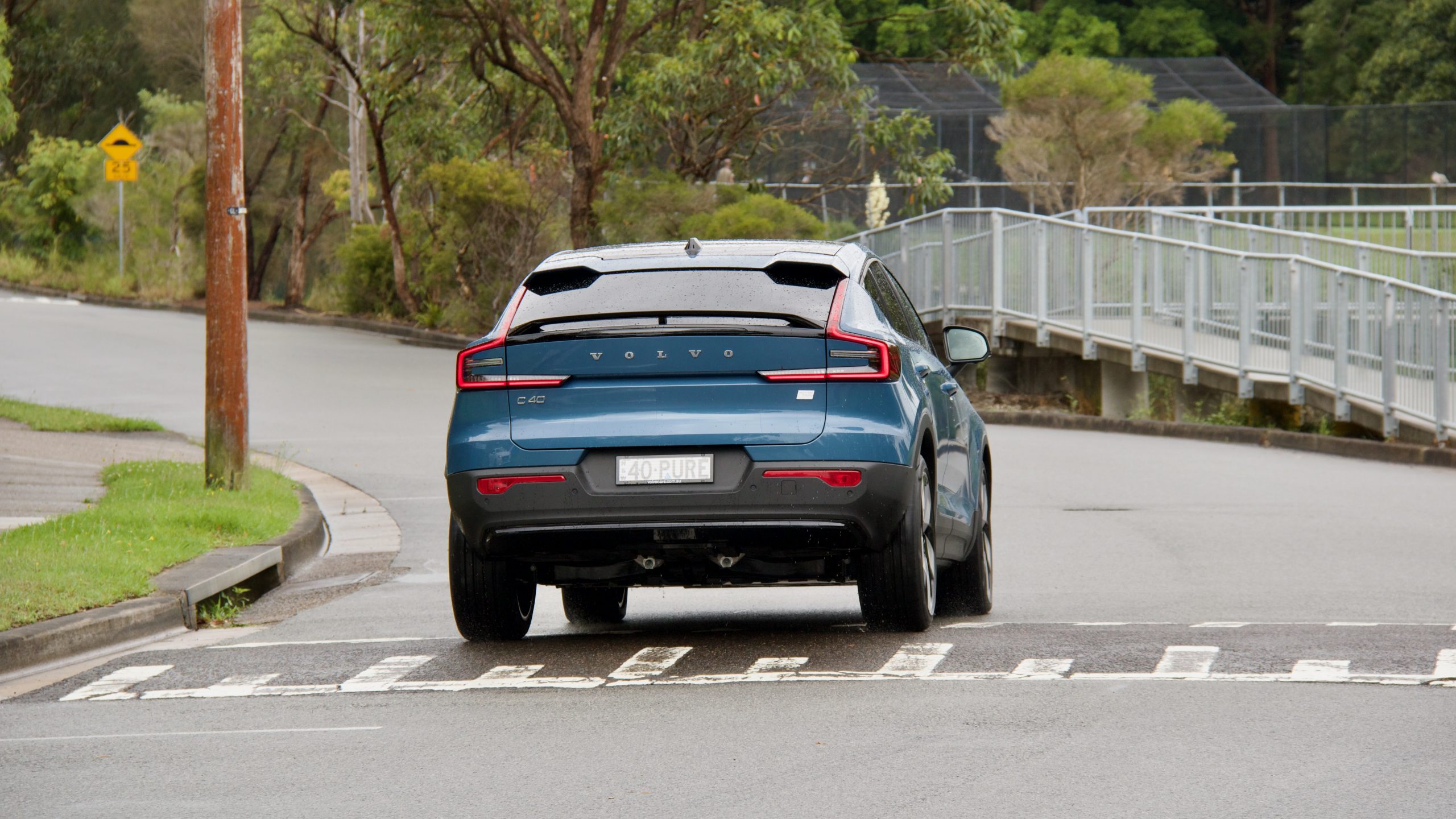
The C40’s rear vision is not as good as the XC40 thanks to its sloping roofline and lack of a rear wiper, though the mirrors are big and the 360-degree camera is quite helpful when parking. Being a Volvo, the C40’s active safety equipment is well tuned and subtle in its operation – the lane keeping assistance is some of the best in the business, while the adaptive cruise control is great too. Pleasingly as well, if you don’t want adaptive cruise control, the C40 also has regular passive cruise control too.
Interior & Practicality: 9/10
As we discovered when the C40 launched in Australia, its cabin – aside from the sloping roofline – is almost identical to the XC40 of which it shares a platform with. This is no bad thing given how much we love the XC40 and just how practical and high quality its cabin is. There are soft touch plastics on the dashboard and doors, while even the harder stuff lower down still feels good quality – the plastic inlays do feel a bit cheap, however.
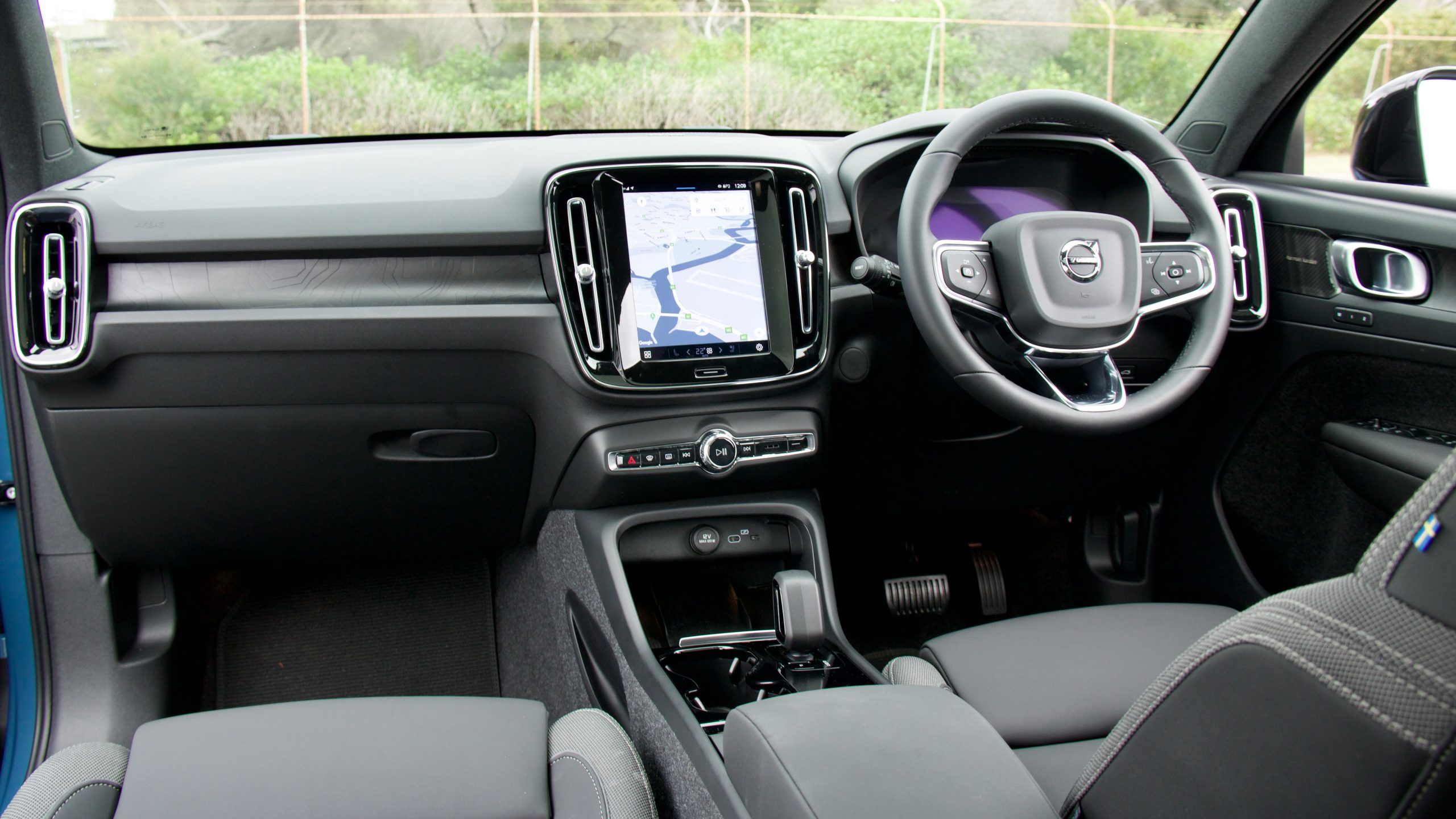
Another potentially jarring element of the C40 (and the XC40 Recharge) is that there’s no starter button – if you have the key on you, just get in and put it into drive and it goes. It’s a great idea in theory, but even if you leave the key in the car and get out of it – let’s say to quickly post a letter – it turns off.
Centre of the C40’s cabin is a 9.0-inch touchscreen that uses Android Automotive software with an inbuilt SIM for live services such as Google Maps, Hey Google voice integration and the Google Play app store to download apps such as Spotify – it also has wired Apple CarPlay smartphone integration.
We quite like the Google integration in modern Volvos – you sign in and the car takes care of the rest, and it also means that your Google accounts from your phone are synced with the car, so that your recent Maps searches – for example – appear on the car’s system too as long as it’s within reception.
The Android Automotive software has a Volvo skin on top of it, so that it feels like the same Volvo system used for the past decade. That means it’s easy to use, quick to respond to touch and the screen quality is quite good as well. The digital driver’s display shows a map but that’s largely it – there’s no Volkswagen Group level of infinite customisation here. But we quite like the 600W 13-speaker Harmon Kardon sound system, which is rich in sound quality and quite beefy with bass as well.
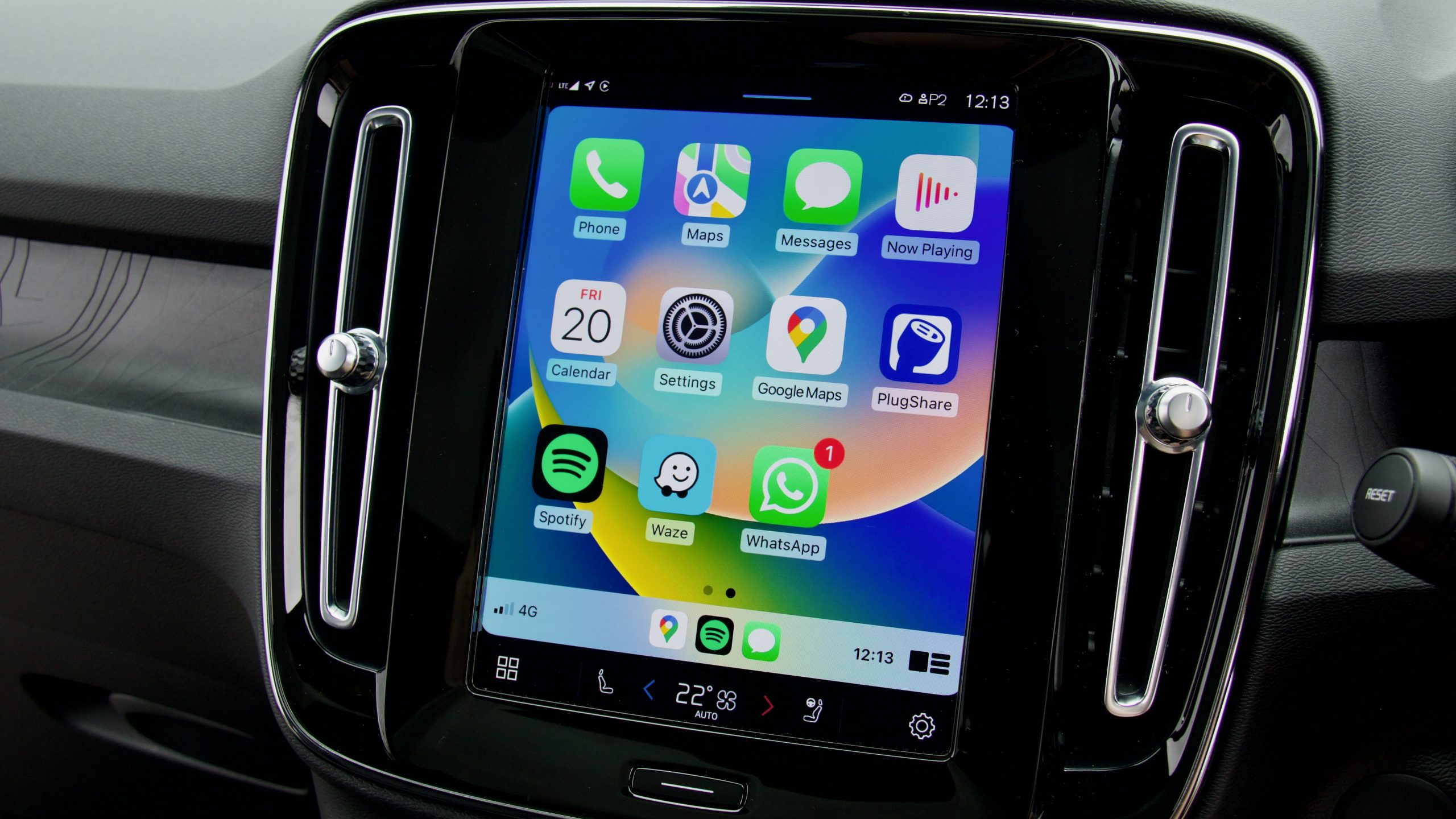
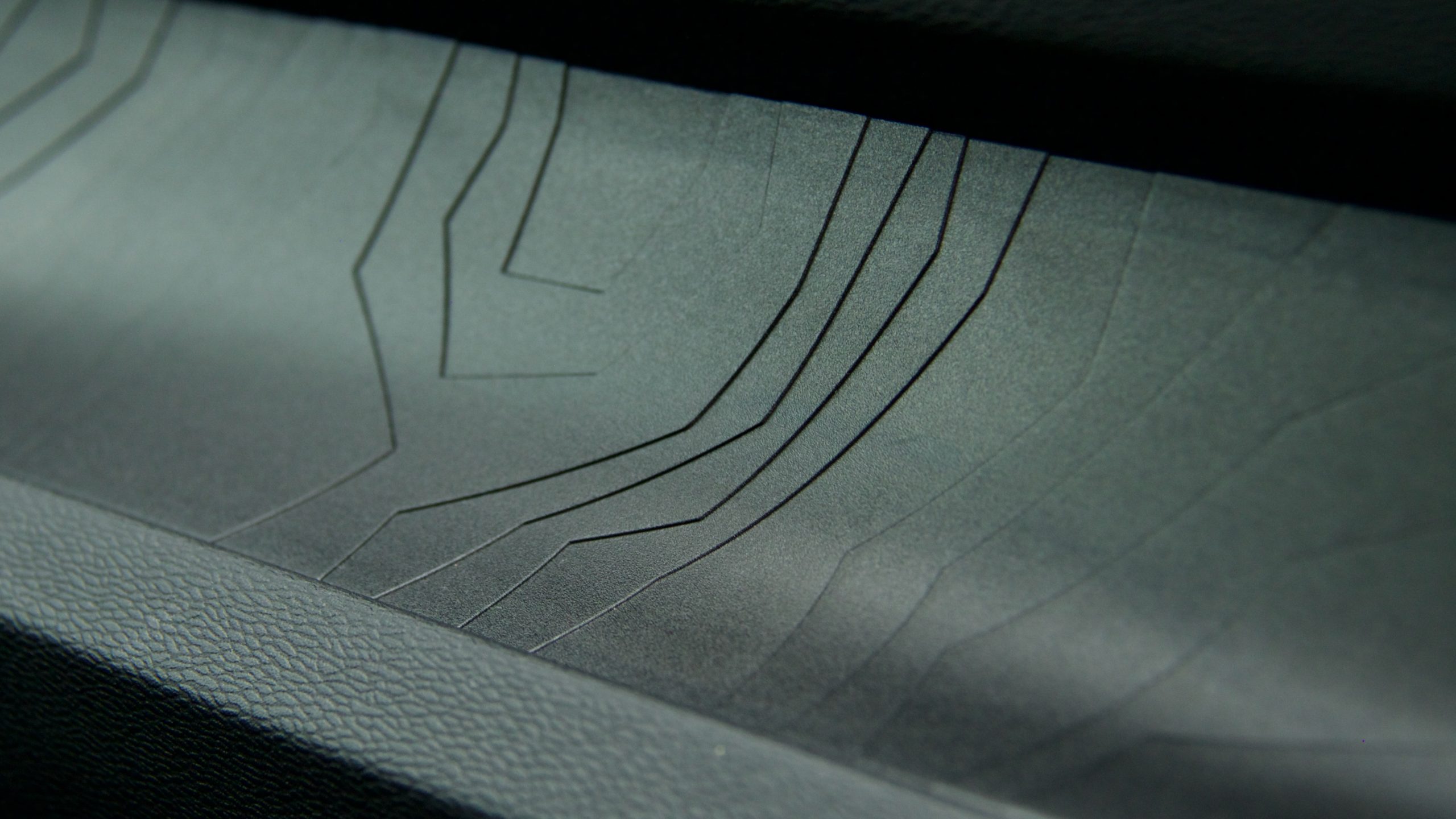
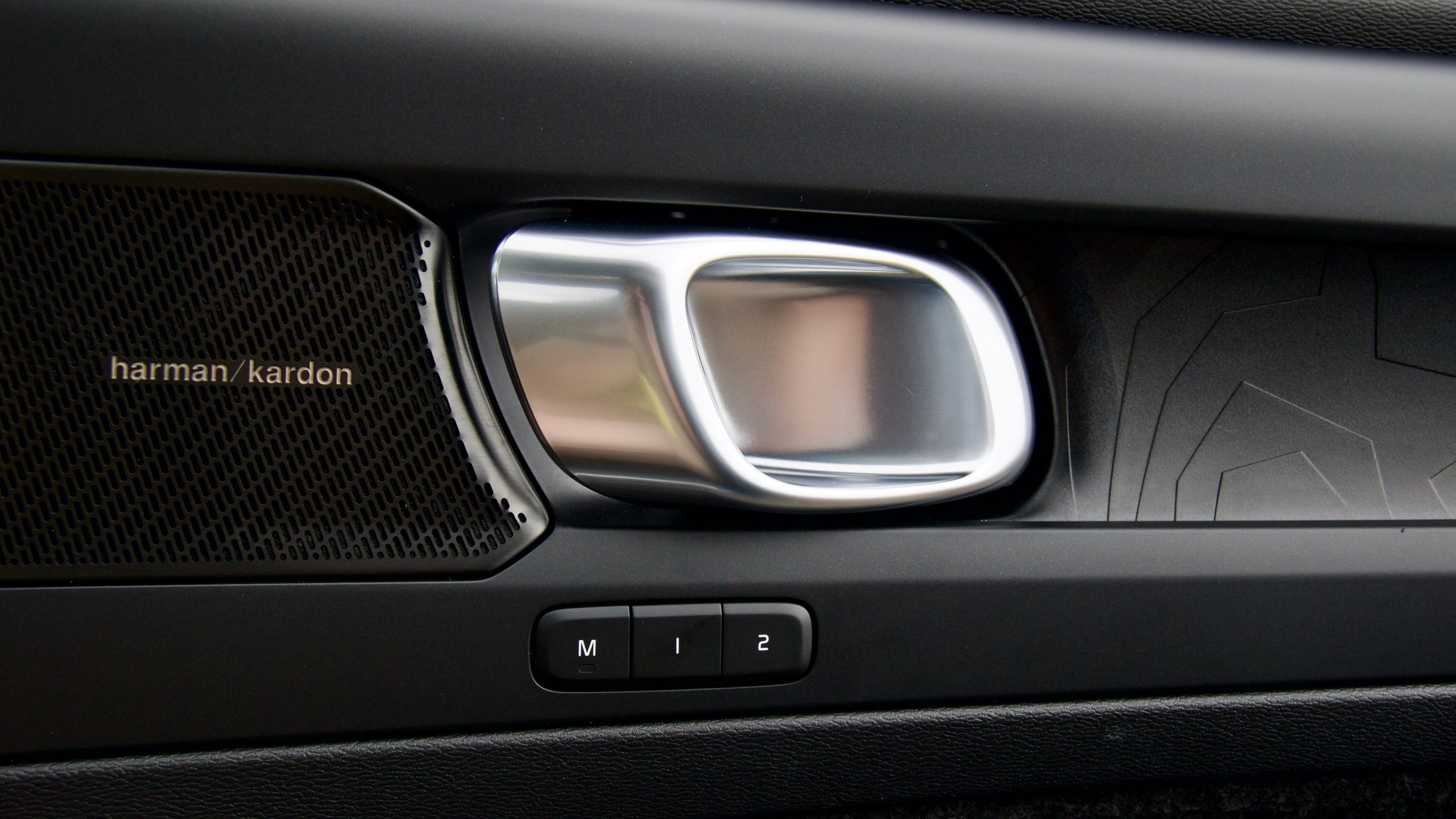
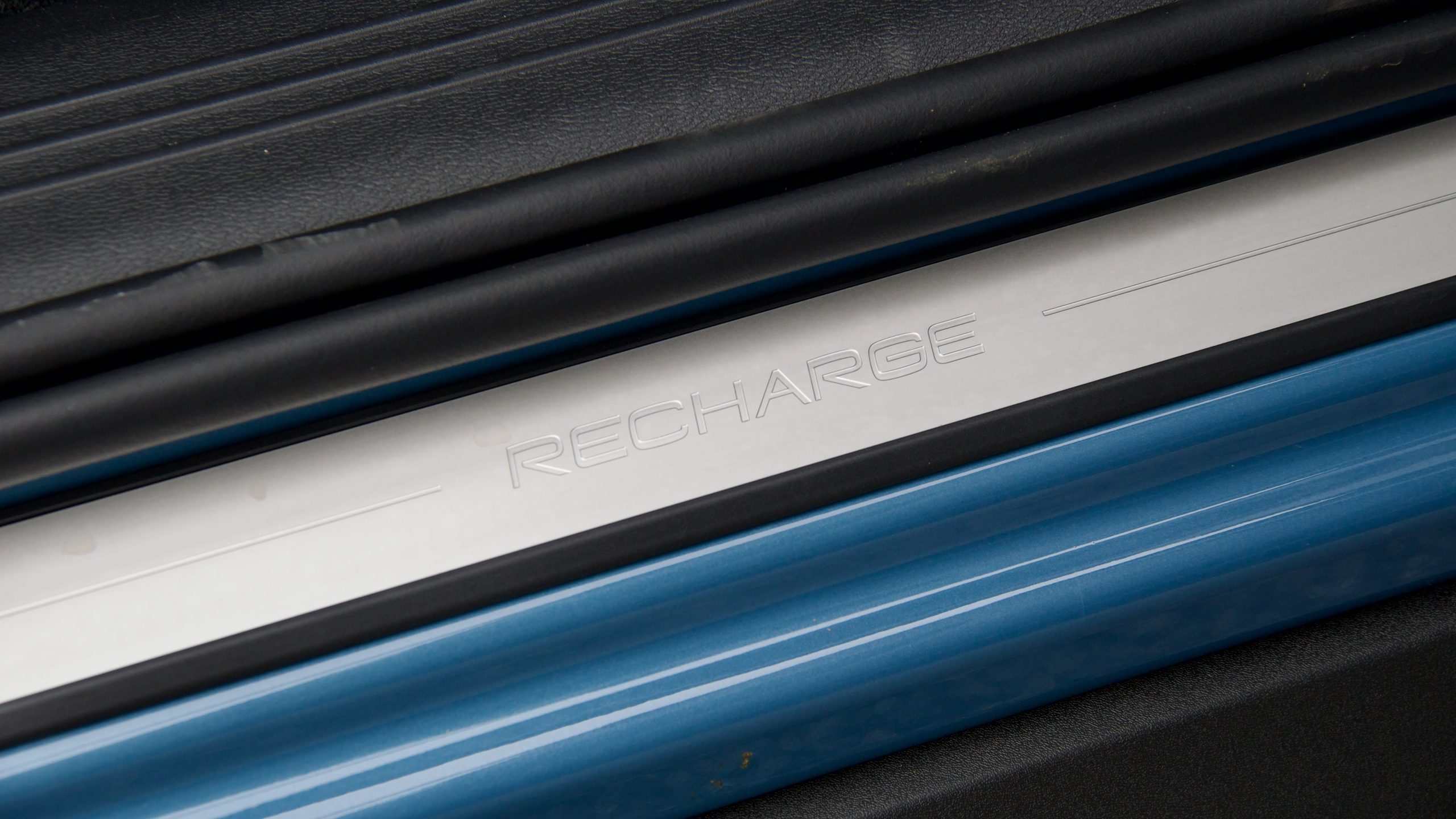
As with the XC40, the C40’s cabin is quite practical. There’s a large storage box under the centre armrest with a separate bin ahead of it, large cup holders, a big tray underneath the central screen with a wireless phone charger, a reasonable glovebox and large flock-lined door bins. There are also a few Skoda-like clever features such as a ticket holder on the windscreen and a bag hook on the glovebox lid.
The back seat of the C40 is not as commodious as the XC40 thanks to its sloping roofline. But headroom for six-footers is just enough and legroom is reasonable as well. It’s also a fully featured back seat space with door bins, map pockets, a centre armrest with cup holders, air vents, heated outboard seats and two USB-C ports for device charging. The front cabin’s good interior quality stretches to the rear with soft touch materials, though the ambient lighting stays in the front, unfortunately.
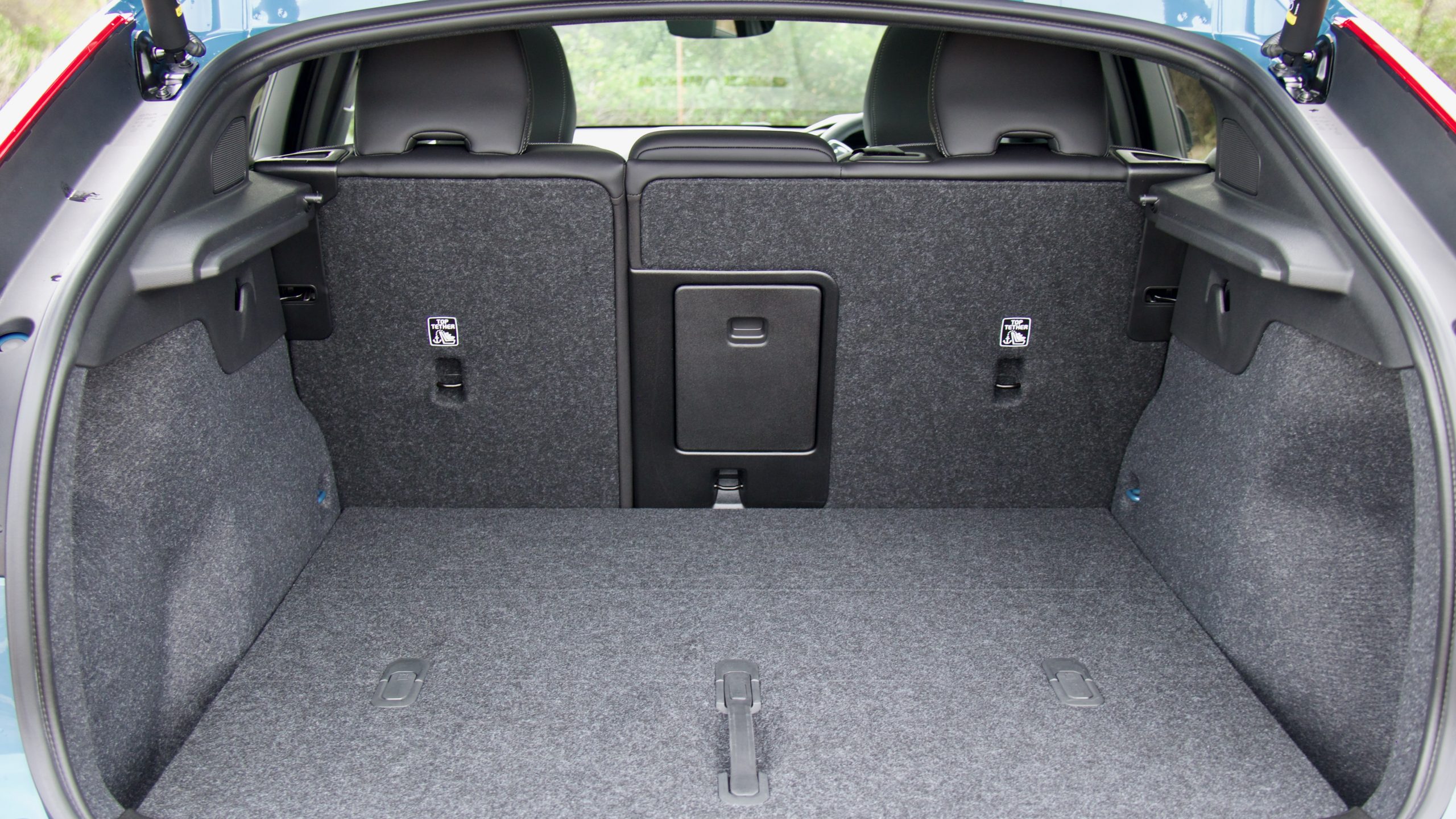
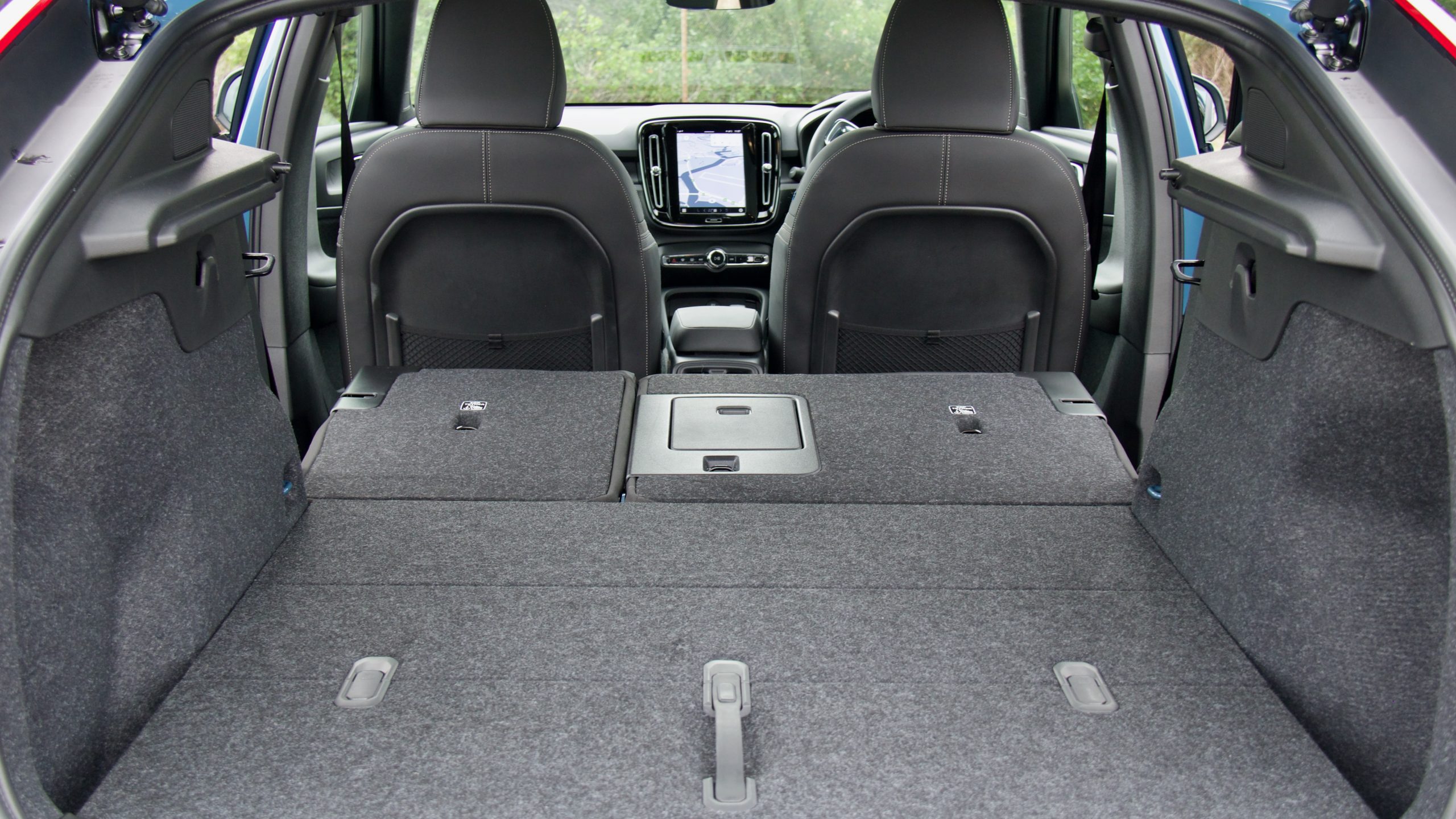
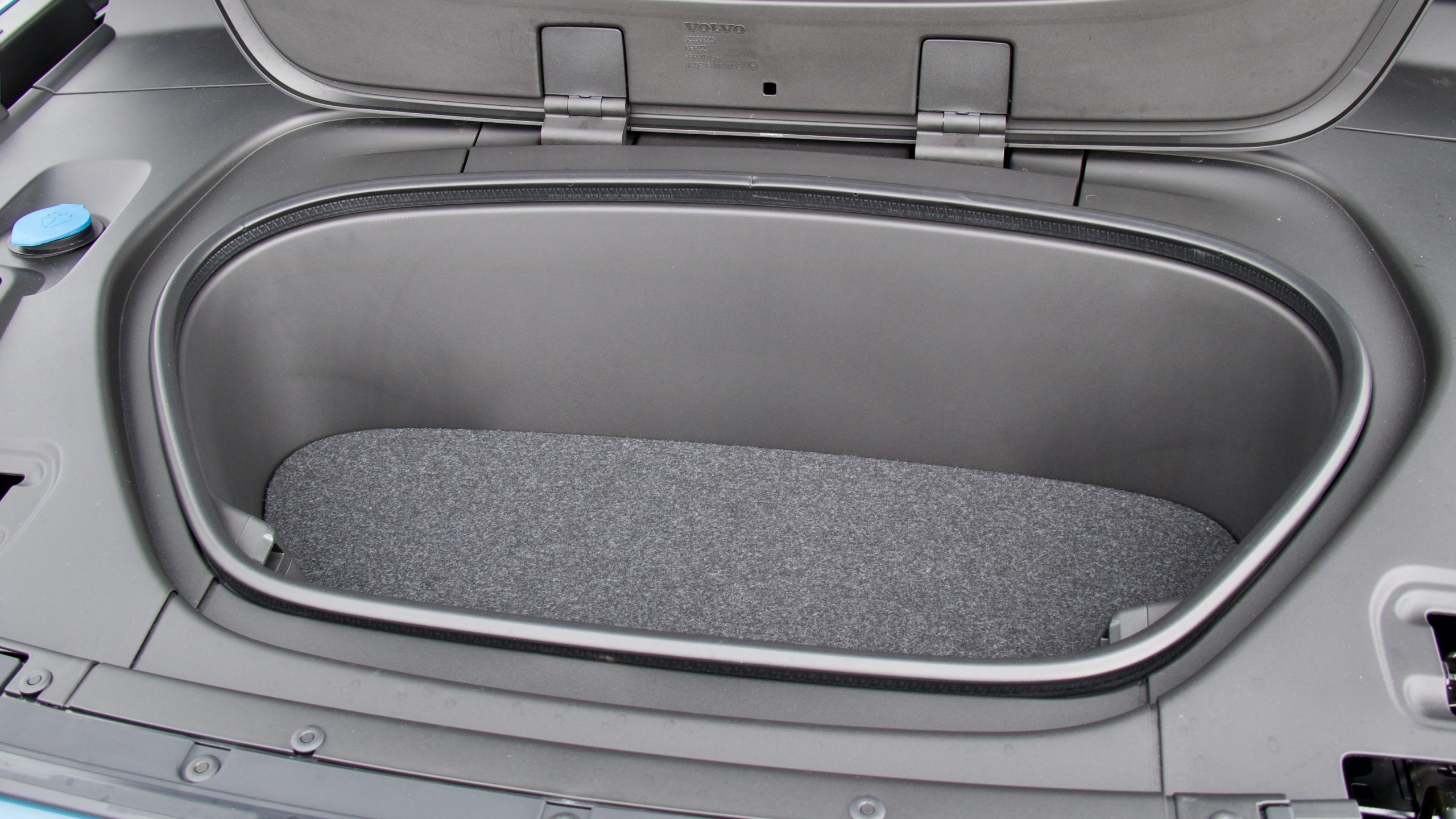
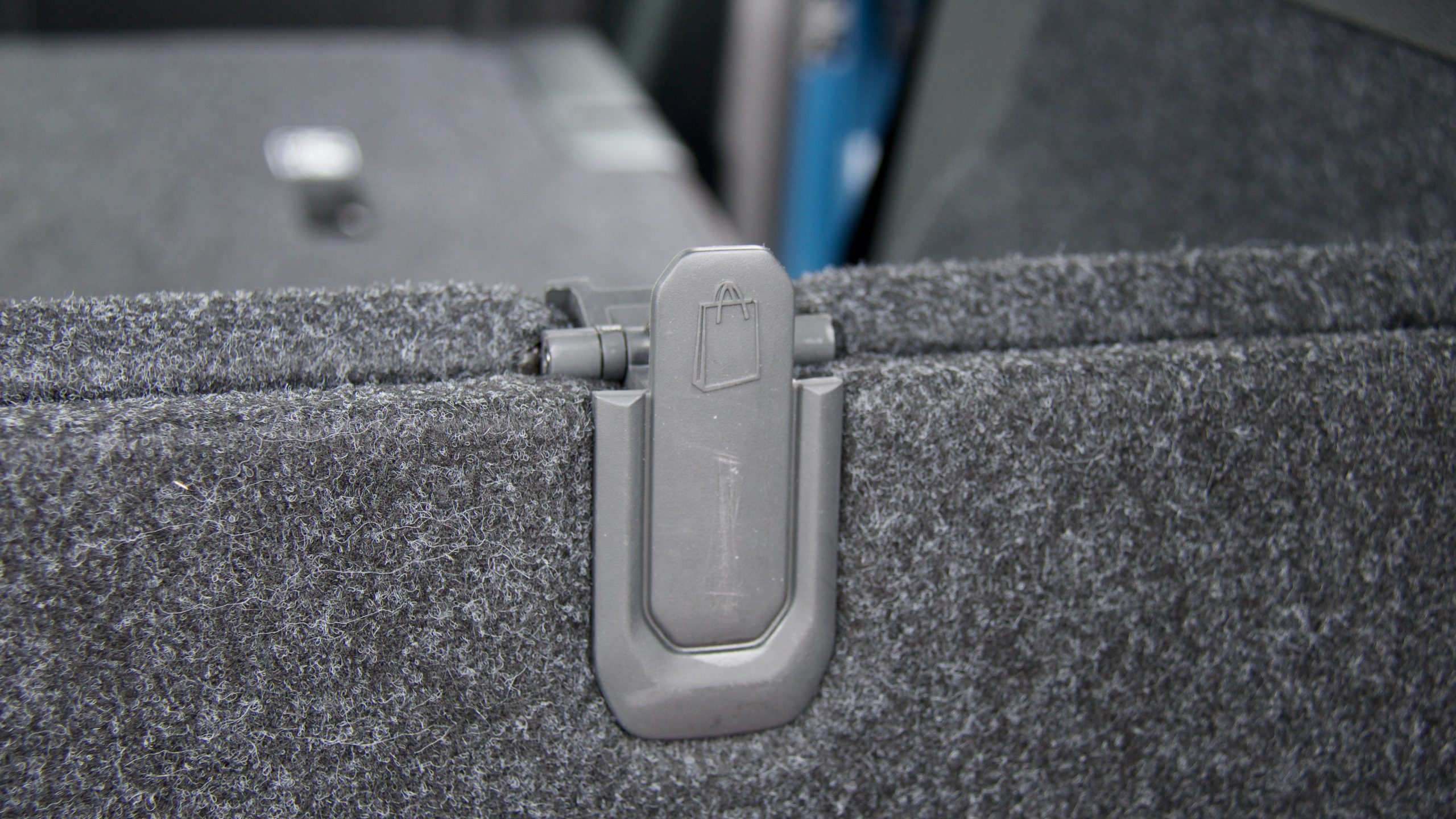
The bootspace of the C40 is 489-litres with the seats up, and 1,205L with them folded. There are also some clever tricks to it, such as under-floor storage, a floor that can be positioned upwards to hold bags in place and even hooks on the floor for once the floor is erect. There are also a few hooks and side storage solutions (plus a 12V socket) but there’s no spare wheel, only a repair kit. Under the bonnet is a second boot, with enough room for a small bag and the car’s charging cable.
Service & Warranty: 9/10
Volvo Cars Australia gives its new cars a five-year/unlimited km warranty with eight years of roadside assistance, and the C40’s requires a service once every two years or every 30,000km (whichever comes first). Three years/100,000km of servicing is included in the C40’s pricing and adding an extra two years of servicing costs $1,000 – this means that five years of servicing costs just $1,000.
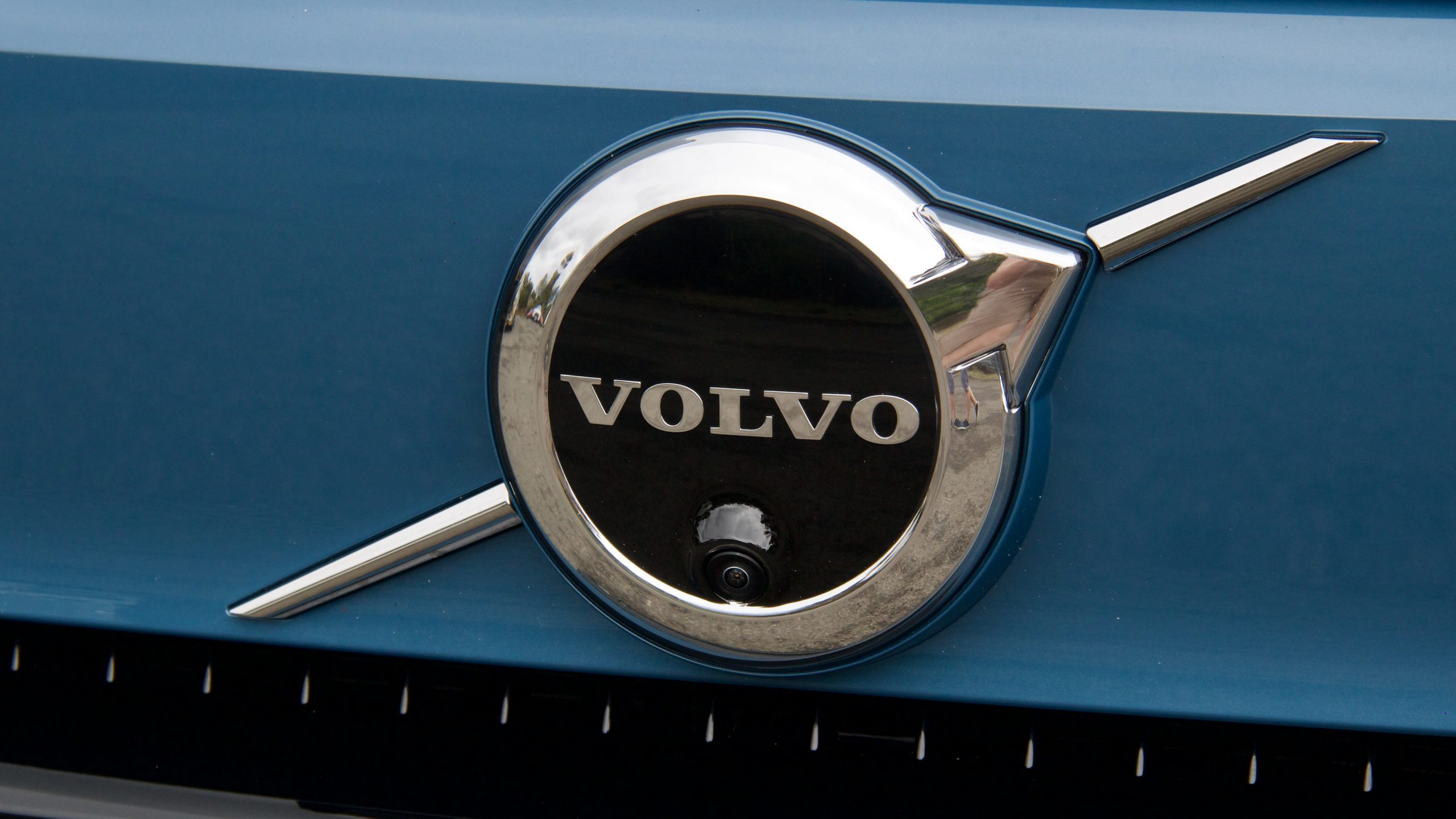
Only Kia gives a better warranty package than Volvo at seven years in total, whereas Mercedes-Benz, BMW and Hyundai all give the same five years of warranty – only Tesla’s is inferior at four years. Only Kia and Hyundai give the same length of roadside assistance as Volvo – and that’s only if it’s serviced at a dealership. Service pricing for the C40’s competitors ranges from unlisted (Tesla) to $2,650 (Mercedes-Benz) for five years of maintenance.
The 2023 Volvo C40 Recharge Twin DiscoverAuto Rating: 8.4/10
As we discovered on the launch of the 2023 Volvo C40 Recharge, Volvo has made a well rounded electric SUV that has (deservedly) found many fans so far in Australia – and not even six months after it was launched as well. It’s got a long list of attributes – it’s well packaged despite not sitting on a bespoke EV platform, it’s very well made, it drives well, it’s very quick and it’s quite well equipped. For those who desire it too, the coupe bodystyle adds a sense of style to an otherwise practicality focused brand.
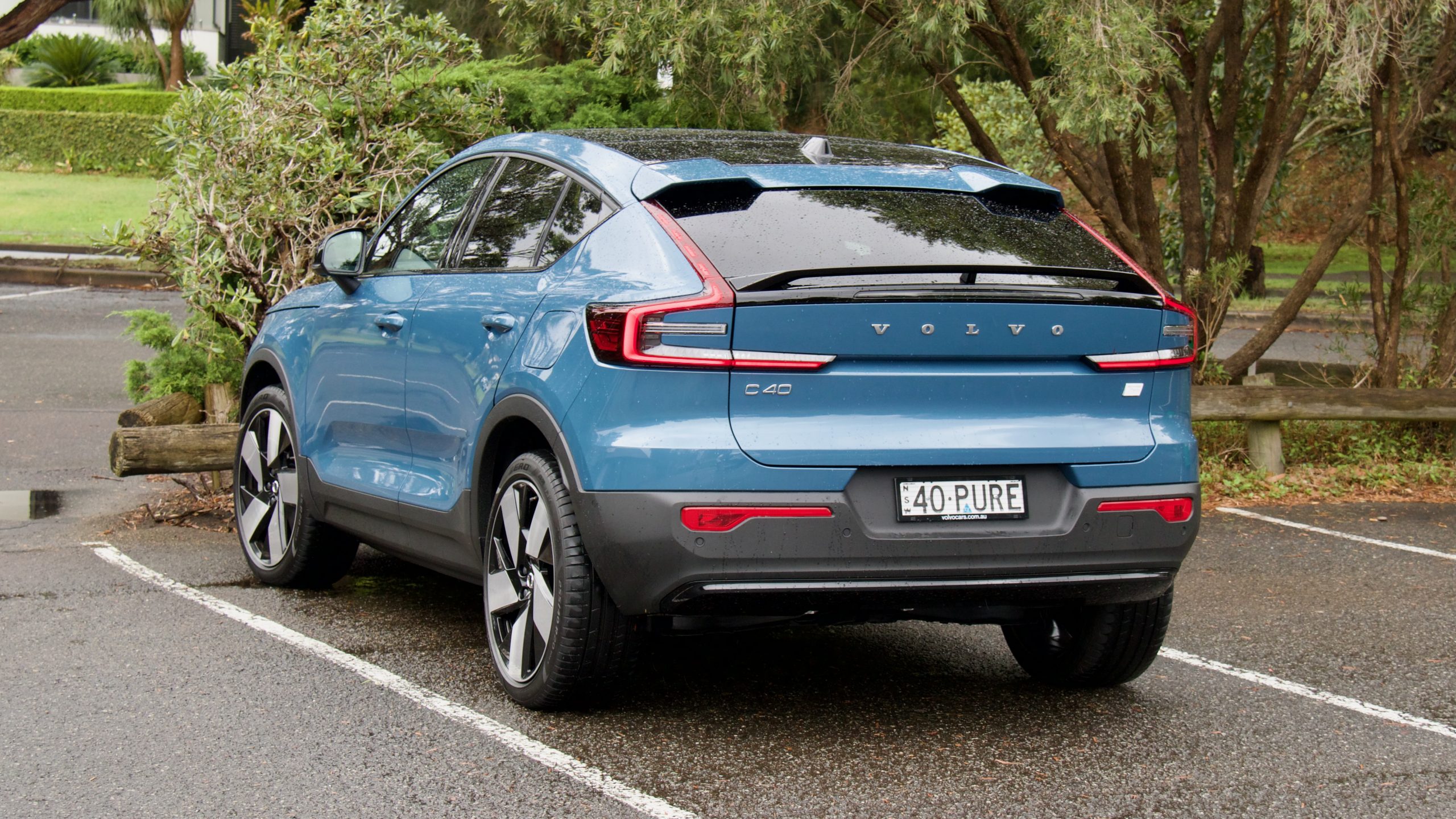
Of course, the C40 isn’t perfect – it gets expensive at the top of the range, it’s not very energy efficient – though as stated, this complaint is being helped later in 2023 with a more efficient drivetrain and quicker charging – and there are a few issues that could be fixed quickly like no rear wiper and no screen for the standard panoramic glass roof that would make Australian summers quite hot. But overall, the C40 is a pretty good car that should be on your electric SUV test drive list.
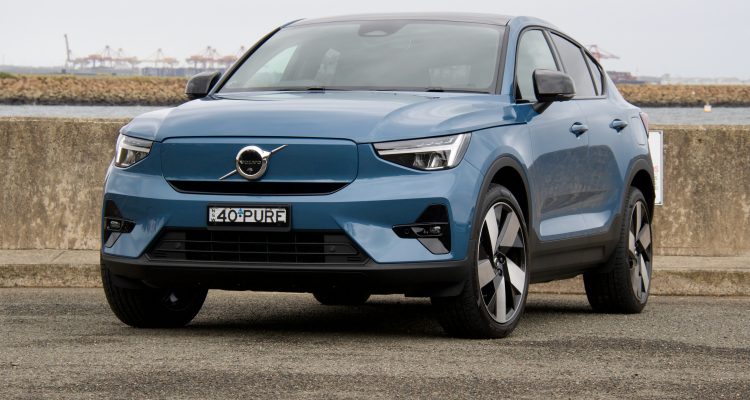
Leave a Reply